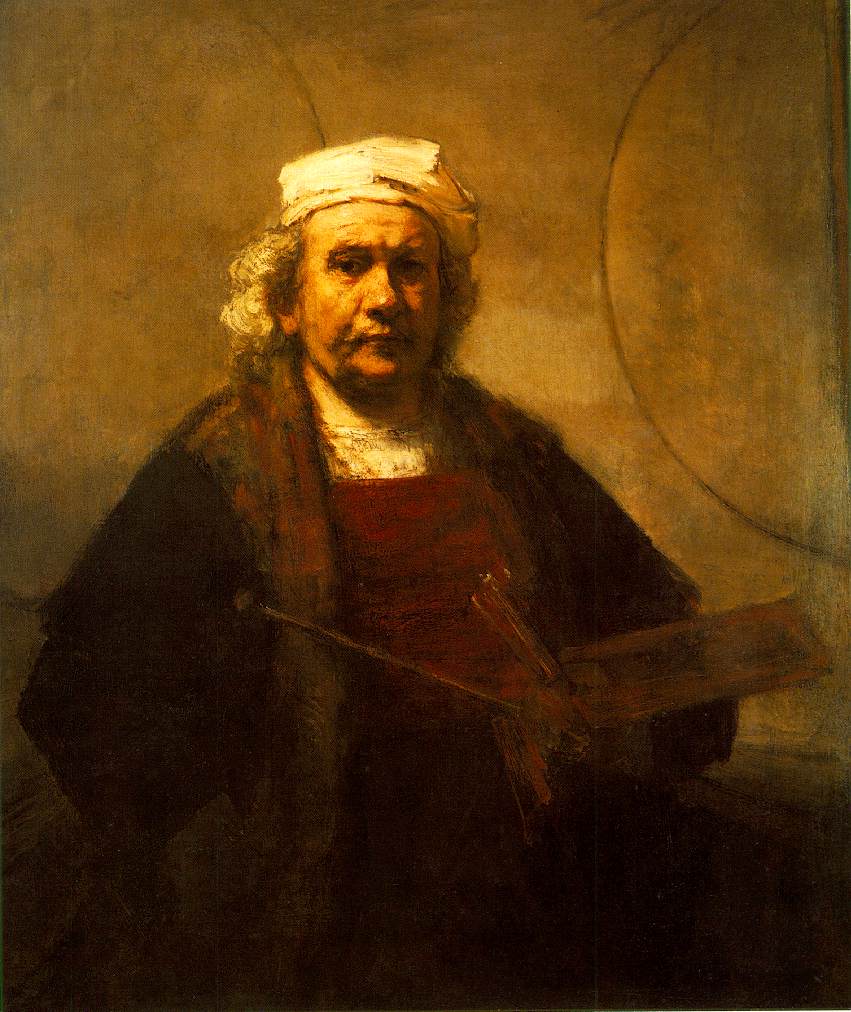

Don Juan, Carlos Castaneda, Petty Tyrants, Self Importance, Impeccability
The Teachings of Don Juan by Carlos Castaneda - A Separate Reality
The Teachings of Don Juan by Carlos Castaneda
Your Majesty,
I lately pass’d through Flanders and Brabant,
So many rich and blooming provinces,
Fill’d with a valiant, great, and honest people
To be the father of a race like this,
I thought must be divine indeed! and then
I stumbled on a heap of burnt men’s bones!
. . .
True, you are forced to act so; but that you
Could dare fulfil your task—this fills my soul
With shuddering horror! O ’tis pity that
The victim, weltering in his blood must cease
To chant the praises of his sacrificer!
And that mere men—not beings loftier far—
Should write the history of the world. But soon
A milder age will follow that of Philip,
An age of truer wisdom:—hand in hand,
The subjects’ welfare, and the sovereign’s greatness,
Will walk in union. Then the careful state
Will spare her children, and necessity
No longer glory to be thus inhuman.
—Posa to Philip II —Friedrich Schiller, Don Carlos, Act III, Scene 10 1. The
Works of Friedrich Schiller: Don Carlos, R.D. Boylan, trans. (New York: Bigelow,
Brown & Co., 1901).
PLATO ON POLITICS IN "REPUBLIC"
Plato spends much of the Republic narrating conversations about the Ideal State. But what about other forms of government? The discussion turns to four forms of government that cannot sustain themselves: timocracy/Monarchs, oligarchy (also called plutocracy), democracy and tyranny/Dictatorship (also called despotism).
Timocracy or Kings and Queens
Socrates defines a timocracy as a government ruled by people who love honor and are selected according to the degree of honor they hold in society. Honor is often equated with wealth and possession so this kind of gilded government leads to the people valuing materialism above all things.
Oligarchy
These temptations create a confusion between economic status and honor which is responsible for the emergence of oligarchy. An oligarchy is a form of power structure in which power effectively rests with a small segment of society distinguished by royalty, wealth, family ties, military control, or religious hegemony. The word oligarchy is from the Greek "to rule, to govern, to command" Such states are often controlled by politically powerful families whose children are heavily conditioned/implanted and mentored to be heirs of the power of the oligarchy. In Book VIII, Socrates suggests that wealth will not help a pilot to navigate his ship. This injustice divides the rich and the poor, thus creating an environment for criminals and beggars to emerge. The rich are constantly plotting against the poor in order to maintain them in their place of bad education, poverty, feudalism, servitude, slavery; in order to maintain their position "It is not enough that I succeed, everyone else must fail" - Gengis Khan.. Aeschylus in his, "Prometheus Unbound" denotes the head of the Oligarchy as Zeus, living out of the body on the astral plane in Mount Olympus, like Sauron of the Lord of the Rings which Tolkien said was, "Applicable" to this planet. There his Rule is, No Fire for Humanity, thus reducing Humanity to the level of beasts. Now, higher flux densities of fire, nuclear power, are necessary to maintain high populations otherwise genocide will be the result.
Democracy
As this socioeconomic divide grows, so do tensions between social classes. From the conflicts arising out of such tensions, democracy replaces the oligarchy preceding it. The poor overthrow the inexperienced oligarchs and soon grant liberties and freedoms to citizens. A visually appealing demagogue is soon lifted up to protect the interests of the lower class. However, with too much freedom, the people become drunk, and tyranny takes over. Democracy, "Eat shit, 10 Billion flies can't be wrong!" Abraham Lincoln, "You can fool all of the people some of the time and most of the people most of the time.. and this is enough in any democracy where you only need 50% of the vote"
Tyranny/Dictatorship
The excessive freedoms granted to the citizens of a democracy ultimately leads to a tyranny, the furthest regressed type of government. These freedoms divide the people into three socioeconomic classes: the dominating class, the capitalists and the commoners. Tensions between the dominating class and the capitalists causes the commoners to seek out protection of their democratic liberties. They invest all their power in their democratic demagogue, who, in turn, becomes corrupted by the power and becomes a tyrant with a small entourage of his supporters for protection and absolute control of his people.
The Philosopher King
Ironically, the ideal state outlined by Socrates closely resembles a tyranny, but they are on opposite ends of the spectrum. This is because the philosopher king who rules in the ideal state is not self-centered but is dedicated to the good of the state insofar as the philosopher king is the one with illuminated knowledge, and he is tested as not being psychopathic. Like a Civil Servant he has passed his examinations. Like a Judge he is protected from secret meetings with interested parties. Usually they are "retired" by the oligarchs.
Tacitus, "Indeed, a nation or city is ruled by the people, or by an upper class, or by a monarch. A government system that is invented from a choice of these same components is sooner idealised than realised; and even if realised, there will be no future for it." Tacitus - To ravage, to slaughter, to usurp under false titles, they call empire; and where they make a desert, they call it peace.
The year 2006 was an unusually rich year for significant birthdays: We
commemorated the 250th birthday of Wolfgang Amadeus Mozart (Jan. 27, 1756) and
the 300th birthday of Benjamin Franklin (Jan. 17, 1706). It is therefore fitting
that, as we bid adieu to 2006, we remember the great genius and sublime artist,
Rembrandt van Rijn, born 400 years ago, on July 15, 1606 (Rembrandt lived till
1669). Like Mozart and Franklin, Rembrandt was a protagonist in a time of
tremendous political, social, and economic upheaval, dominated by his nation’s
80-year struggle for its independence from Hapsburg Spain, and by the Thirty
Years War, both of which ended with the 1648 Peace of Westphalia More than any
other single figure of that era, Rembrandt embodies the most beautiful idea of
his time, as it was given expression in the Treaty of Westphalia: that to
establish peace among the warring parties, “each Party shall endeavour to
procure the Benefit, Honour and Advantage of the other.” - “Treaty of
Westphalia: The Avalon Project”; Yale Law School,
www.yale.edu/lawweb/avalon/westphal.htm.
Through his hundreds of paintings, etchings, engravings, and drawings, Rembrandt
left us one of the most extensive bodies of creative output of any individual in
history. His scores of self-portraits, an unprecedented and never-surpassed
record of his life and character, provide a brilliant autobiography, as
revealing as any ever written.
His courage and love for mankind, in the face of the evil of Venice’s Habsburg
oligarchy, whose hatred and contempt for humanity Rembrandt stood courageously
against, as so beautifully expressed in his art, should inspire us today to take
on Venice’s satanic offspring, with Rembrandtian determination and agape¯.
While art historians have pieced together the outlines of his life—and these are
available in thousands of books, more of which are published each year, and on
hundreds of Internet websites—if we really want to know Rembrandt, we must find
the truth in his art: his paintings, drawings, and prints, which tell us much
about the impact that the political, scientific, and cultural revolutions of his
time had on his thinking and his work. And we must look at his Enormous artistic
output in the context of the world shaking events that took place in the 17th
Century, and shaped his world view.
* * *
In 1606, the English King James I established two merchant companies eager to
stake their claims upon the legendary riches of North America. They set forth on
Dec. 20, and on May 14 of the following year; 108 settlers of the Virginia
Company landed at what they called Jamestown Island, to establish the first
English colony in the New World. Some five months before the English ships
embarked from London, a boy, the ninth of ten children, was born to a prosperous
miller of Leiden, in the province of Holland, in the northern Netherlands.
Harmen Gerritsz. van Rijn (whose name is derived from the Rhine River), and his
wife, Neeltje van Suijttbroeck, who was the daughter of a baker, named their son
Rembrandt.
These two events, the English colonization in North America, and the birth
of Rembrandt, are connected by more
than mere happenstance. The historical and cultural forces that led to the
establishment of the United States of America, also produced this artistic
genius who took into his art all the great discoveries and achievements of the
15th-Century Renaissance, and added to them his own contributions, which until
now, have never been surpassed. As we shall see, Rembrandt anticipated, and gave
expression, through his visual metaphors, to the very principles—the
“self-evident truths”—that formed the foundation of the American Republic, as
they were to be expressed a century after his death: the inalienable rights of
all men; the basic goodness of mankind; the role of government as the protector
of the common good.
Rembrandt’s commitment to these principles would place him in direct opposition
to the oligarchical forces that seized control of the Netherlands during the
17th Century, just as the founders of the American Republic would find
themselves in a struggle, ultimately victorious, against that same Anglo-Dutch
Liberal power.
Young Rembrandt
Rembrandt chose a propitious place for his birth. Early 17th-Century Leiden was
one of the leading intellectual and artistic centers in Europe, home to the
celebrated Leiden University. It was also a magnet for refugees of religious
persecution from all over Europe, who were fleeing the horrors of the ongoing
religious wars and from the terrifying Spanish (Hapsburg) Inquisition. These
included Puritans from England, Sephardic Jews from Spain and Portugal,
Ashkenazi Jews from Eastern Europe, and Catholics and Protestants of all stripes
fleeing the horrors of the wars which swept the continent throughout the 16th
and half of the 17th Centuries. The influx of immigrants added to the
intellectual and economic vigor of the city, and helped to shape Rembrandt’s
earliest impressions.
By Rembrandt’s time, these religious and political conflicts—which began in 1492
with the expulsion of the Jews from Spain by a monarchy in thrall to Venetian
manipulation setting Catholics against Protestants, Protestant sects against one
another, nobles against peasants, feudal barons against the merchant
class—ignited a series of wars which had lasted 150 years, and drenched the soil
of Europe in blood over much of its territory. The Thirty Years War (1618-48),
at the end of this period, devastated most of Europe, but struck most severely
in present-day Germany: An estimated 5 million people were sent to their graves
in Germany alone, and the population fell from 15 million to less than 10
million. Those who escaped the immediate effects of the war, then faced famine
and disease as farmlands and cities were destroyed; the Plague struck again and
again, adding its grim toll to the death count.
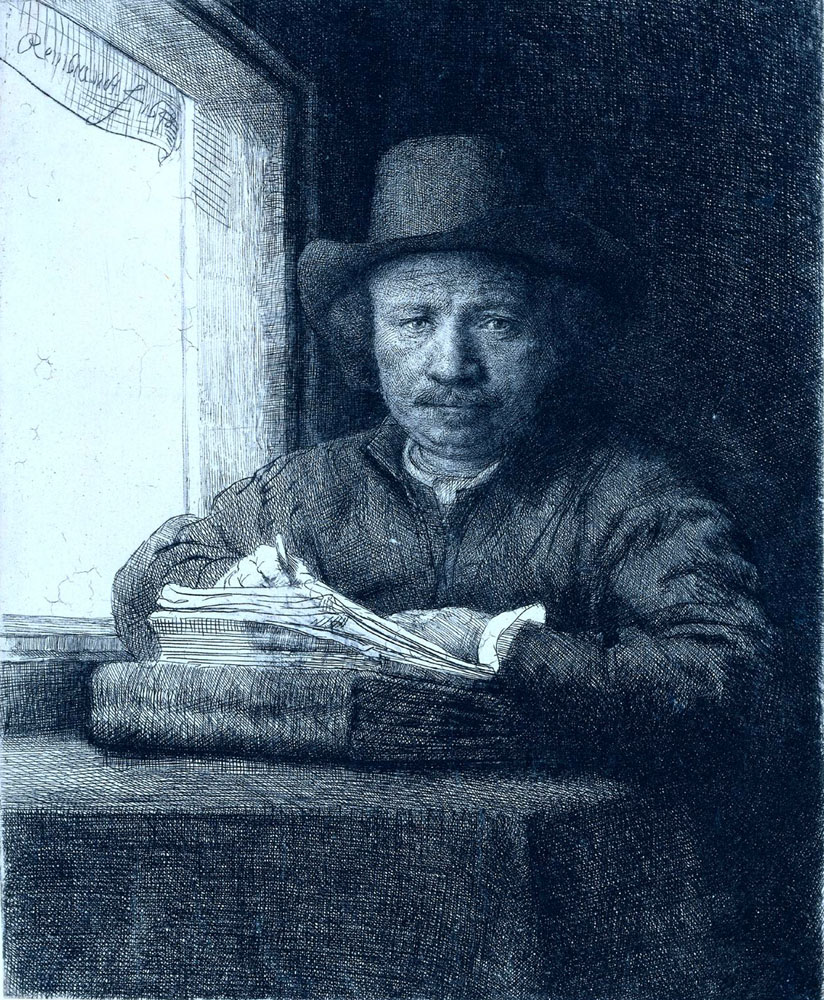
Rembrandt depicts himself in
1648, as he looks up from his etching. It is the year of the Peace of
Westphalia, ending the Thirty Years War, but Rembrandt’s expression is anything
but pacific; it seems to say, there is still a lot of work to be done.
The setting of Rembrandt’s birth and education cannot be separated from the fact
that the Dutch attitude toward the education of children, even from the “lower
classes,” had been shaped by the influence of the schools of the Brethren of the
CommonLife, a religious/political movement, founded by Gerhardt Groote in the
15th Century, whose ideas were then disseminated by Thomas a` Kempis’s widely
read book, The Imitation of Christ. In Leiden of Rembrandt’s time, the movement,
known as the Devotio Moderna, promoted the precept that the individual believer
should develop a personal, direct relationship to God, without the intercession
of priests, or other anointed figures. By reading the Bible, the individual
could develop the spiritual strength to live in “the imitation of Christ.”
Needless to say, this was a revolutionary idea, one which demanded literacy for
the common man, and challenged the feudal system, in which a small number of
oligarchs ruled over the mass of what they viewed as human cattle.
Among the more famous students
of the Brotherhood schools were the Renaissance geniuses Nicholas of Cusa, the
founder of both the modern commonwealth form of nation state, and of modern
science; and the Erasmus of Rotterdam associated with England’s Sir Thomas More
In this setting of his childhood and early youth, Rembrandt, as the son of a
well-to-do miller, attended the Latin School in Leiden, from age 9 to 13. Then,
in 1620, at the time of the Plymouth settlement in what was to become the U.S.
Commonwealth of Massachusetts, he was registered at the University of Leiden to
study literature, although we have no record of his having ever attended classes
there. Instead, he was apprenticed at age 15 to a local artist, Jacob Isaacsz.
van Swanenburg, with whom he studied until 1622.
Perhaps the question of why Rembrandt was taken out of school, and apprenticed
to Swanenburg, is answered by Rembrandt’s biographer Gary Schwartz. In 1618, the
year of the outbreak of the Thirty Years War, Maurits, Prince of Orange, the
Venetian-controlled son of the great and good William the Silent, the Father of
the Netherlands, overthrew by force the ecumenical government of Leiden, and
installed a virtual Calvinist dictatorship. The coup extended beyond the city
council, into the schools, and other institutions of civic life.
The political opponents of the House of Orange and its Calvinist allies in
Leiden were loosely organized around the followers of the Remonstrant faith, a
branch of the Protestant Church, with which Rembrandt was associated. When the
“Orange Revolution” in Leiden overturned the more moderate and tolerant
Protestant leadership, other outcast groups, including both renegade Protestant
sects and Catholics, tended to coalesce around the Remonstrants. It will be the
members of this latter "coalition,” with its ties into Amsterdam, who will
constitute the humanist circles that nurtured Rembrandt in his early years in
that city. Rembrandt’s mother was a Catholic; his father, a lapsed member of the
Dutch Reformed Church. This may help to explain his lifelong ecumenical outlook.
THE ENERGY ENHANCEMENT SYNTHESIS OF LIGHT INTERFAITH SYMBOL AS A HEART CHAKRA LOTUS

The Synthesis of Light Symbol
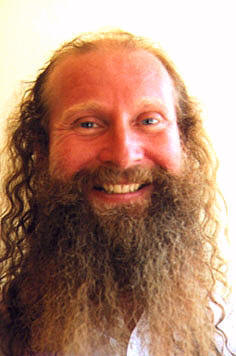 Master Satchidanand
Master Satchidanand
"Energy Enhancement gives you Energy and Peace. Instead of taking over TWENTY ONE years of meditation, these advanced techniques allow the process to be speeded up and perhaps completed in only Three years, because now, Enlightenment is not enough!"
Envy, Desire and Ambition limit a man to the Universe of Maya. And what is his Universe? It is only a projection of his Envy, Desire and Ambition.
Sayings of the Abbods
THE TRUTH IS ONE, THE PATHS ARE MANY
IF THE RELIGIONS CANNOT COME TOGETHER, WHAT CHANCE HAVE THE POLITICIANS?
The Energy Enhancement Symbol
The Energy Enhancement Symbol of the Twelve Petalled Lotus of the Heart Center with One of the Symbols of the Worlds Major Religions in Each One of the Petals.
Inside the symbol is the Hexagram - The Seal of Solomon, with the Seven Chakras describing the Three Initiations on the Path of Enlightenment -
Initiation 1. The Opening of the Heart. Solar Plexus to Heart Chakra.
Initiation 2. The Mastery of Relationships, Abdomen to Throat Chakra.
Initiation 3. Enlightenment, Base to all the Head Chakras
which is taught on the Energy Enhancement Course plus many other Initiations.
At the Very Center is the Heart Chakra radiating Peace and Light outwards.. like the Sun...
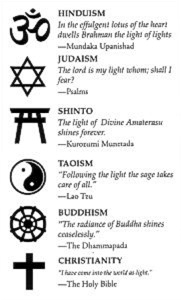
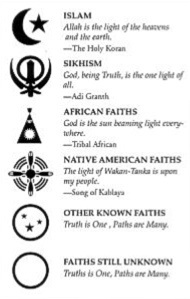
The Leiden Studio In that setting, 16-year-old Rembrandt had travelled to
Amsterdam to begin his advanced training as a painter in the studio of Pieter
Lastman. From the time that Rembrandt began his Leiden studies with Swanenberg in
Leiden, he was taken under the protection and patronage of leading members of
the Leiden/Amsterdam humanist intelligentsia. One of the key figures among them
was the Remonstrant Pieter Hendricksz Schrijver (Petrus Scriverius),
Swanenburg’s next-door neighbor, a Classical scholar, and patron of vernacular
Dutch Renaissance poetry. Scriverius’s Amsterdam relatives, espespecially his
cousin Geurt Dirsksz. van Beuningen, an alderman, and his brother Jan Dircksz.,
were active in the art market.
From 1617 to 1646, the van Beuningens were one of the two leading auctioneers of
Amsterdam, and Rembrandt would have extensive ties with them, as he built his
own collection of artworks, and sold his many prints through their auctions.
In 1622, the year Rembrandt arrived in Amsterdam, the van Beuningens were
elected to the town council, thus giving the young artist important allies in
the city. Moreover, Rembrandt’s new master, Lastman, lived next door to Guert
Dircksz van Beuningen.
Meanwhile, even before Rembrandt left for Amsterdam to study with Lastman, he
and his friend and fellow artist, Jan Lievens, had set up a studio in Leiden in
1624. After his apprenticeship in Amsterdam, Rembrandt returned to Leiden, and
began producing etchings, in addition to paintings and drawings.
At this time, he took on his first students.
Rembrandt’s prints were to become the greatest part of his artistic legacy. Like
the German master Albrecht Du¨rer (1471-1528) before him, Rembrandt understood
the power of mass organizing through the medium of prints (he owned several
series of Du¨rer’s prints, along with those of the great Italian Renaissance
artist Andrea Mantegna [1431-1506]). Each copperplate could produce hundreds of
prints, and thus they were able to reach a wide market, whereas his paintings,
which were commissioned by powerful and wealthy patrons, would be seen by only a
privileged few.
Through these prints—the equivalent of today’s leaflets and pamphlets—Rembrandt
was producing a “mass effect.”
His etchings reached far beyond the borders of The Netherlands, and were
responsible for the international reputation he enjoyed during his lifetime. In
1660, the Italian painter Guercino (Giovanni Francesco Barbieri), speaking of
Rembrandt’s prints, which were circulating in Italy, said, “I frankly consider
him to be a great virtuoso.”
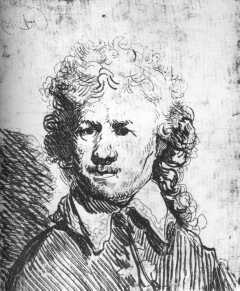 He also
produced the first of his self-portrait prints in this period In this rough
etching from 1629, Rembrandt has given us one of the first examples of what will
be a lifetime of portrayals of his own image: a hold-nothing back autograph. His
appearance, despite his early success conveys anxiety; it’s a troubled, but also
determined expression. The tension around his mouth and eyes is reinforced by
the lopsided set of his collar and his gaze away from us, toward a view we
cannot see, but which is only suggested by his reaction to it. In this early
print, we find the seed crystal of the mature artist he is to become.
He also
produced the first of his self-portrait prints in this period In this rough
etching from 1629, Rembrandt has given us one of the first examples of what will
be a lifetime of portrayals of his own image: a hold-nothing back autograph. His
appearance, despite his early success conveys anxiety; it’s a troubled, but also
determined expression. The tension around his mouth and eyes is reinforced by
the lopsided set of his collar and his gaze away from us, toward a view we
cannot see, but which is only suggested by his reaction to it. In this early
print, we find the seed crystal of the mature artist he is to become.
- A self-portrait of 1629,
when the artist is only 23; these are troubled times, but Rembrandt appears
confident, even combative and ready to take on the world.
In this early period, he and Lievens were “discovered” by Constantijn Huygens,
the powerful statesman and secretary to the Prince of Orange. Huygens, the
father of Gottfried Leibniz’s associate and ally, Christiaan Huygens, was the
sometime Ambassador of Orange to the English Court of St. James, and was
knighted by King James I; the elder Huygens would later turn against Rembrandt,
and was involved in the persecution of the artist, which led to Rembrandt’s
bankruptcy.
The question of Constantijn Huygens’ relationship to Rembrandt and his key role
as a leading figure in the Court at The Hague, is somewhat paradoxical,
considering what we know of the plot by Christiaan Huygens and Gottfried Leibniz
to copy covert papers from the British monarchy’s captive documents of Leonardo
da Vinci, doing this, under the protection of Constantijn, in service of the
science program of France’s Jean-Baptiste Colbert.
Constantijn Huygens was, at the time, the leading promoter in the Netherlands,
of the Flemish painter Peter Paul Rubens (1577-1640), the official painter of
the Council of Trent, and the Counter-Reformation. (Rubens, it seems, took after
his father, Jan, a radical Calvinist and city counselor in Antwerp, who became
infamous for carrying on an illicit affair with the emotionally fragile wife of
the Dutch hero William the Silent.) Rubens himself became court painter at
Antwerp, and later held the impressive title, “Secretary to the King in His
Secret Cabinet.” Huygens apparently intended to make Rembrandt a “Dutch Rubens,”
an effort doomed to fail. No two artists could have been more diametrically
opposed in their life’s mission: Rubens used his considerable skills as a
propagandist for the oligarchy, while Rembrandt’s art upheld the nobility of the
most humble of his fellow men and women.
Yet, Rembrandt initially benefitted from Huygens’ patronage: Huygens held the
powerful post of Secretary to the Statholder and Prince of Orange Frederik
Hendrik. Once established in Amsterdam, the young artist received a number of
commissions for the court at The Hague; among them were a pair of portraits of
the Prince (1631) and his wife, Amalia van Solm (1632).
Rembrandt was then 26 years old.
Between 1628 and 1631, Lievens and Rembrandt were kept busy with commissions
from the Court. These included at least two of the Apostle Paul (St. Paul in
Prison and St. Paul at His Desk)—Paul will become a subject that Rembrandt
returns to again later, many times, including a self-portrait as the saint.
Rembrandt clearly saw something in the life of Paul, who underwent a
transformation, rejecting his past as a persecutor of the followers of Jesus in
the Roman Empire, to become a leader and teacher of the movement after Christ,
following his “Damascus Road” conversion. Perhaps there was also a resonance in
Rembrandt’s mind between Paul’s letters to the early “Christian” communities,
and his own many “epistles”—prints—which reached out into the population to
spread the ideas of the Renaissance.
Amsterdam: The Venetian
Takeover
. . Men hastened toward a country where freedom raised its gladdening flag,
where respect and safety and revenge on her oppressors were assured to fugitive
religion. When we consider the confluence of every people in today’s Holland,
who upon entering her territory regain their human rights, what must it have
been then when all the rest of Europe still groaned under an oppression of
spirit, when Amsterdam was well nigh the sole free port of entry to all
opinions? . .
At the very time when the republic of Holland was still struggling for her
existence, she advanced the borders of her territory across the ocean and
quietly built up her East Indies thrones. —Schiller, Revolt of the Netherlands -
“The History of the Revolt of the United Netherlands Against Spanish Rule,”
“Introduction,” Susan Johnson, trans.; in Friedrich Schiller, Poet of Freedom,
Vol. III (Washington, D.C.: Schiller Institute, 1990).
The Amsterdam Rembrandt found at the age of 24 was a city of contradictions: As
mentioned above, the city, which allowed a high degree of toleration in an age
of religious warfare, became a refuge from war and persecution; at the
same time, it was home to the most evil financial oligarchy in history.
Following Venice’s defeat of the League of Cambrai in 1511, the Serenissima
Repubblica seized on Hapsburg Spain as its instrument to impose the bestial rule
of the Inquisition, to terrify and demolish the enemies of its imperial rule.
Thus was unleashed a century and a half of bloodletting, whose purpose was to
crush out of existence the political scientific, and cultural breakthroughs of
the 15th-Century Renaissance, and the emergence of the modern nation-state
republic.
And so were founded, at the dawn of the 17th Century the British and Dutch East
India Companies - the “Anglo-Dutch Liberal” imperial maritime power. Indeed, the
Dutch “Republic” was established as a replica of its Venetian parent: The
republic was no such thing; rather, it was a tightly organized oligarchy of
leading families ruled through a network of political and financial
institutions. Then the Venetian takeover of Britain when William of Orange,
representing the Venetian Oligarchy, took
the British throne.
Rembrandt’s painting of “The Syndics of the Cloth makers’ Guild (The
Staalmeesters)” of 1662 - see below - perfectly captures the character of this
Venetian-style financial oligarchy: The conspiratorial meeting is interrupted,
as these powerful men go over their books; the man at the far right is clutching
his moneybag, which has taken on the shape of a snake’s heads - Snakes in Suits. The standing
figure at the left has risen from his seat, and cast a warning look at the
intruder. What are they hiding?
In 1550, the Spanish King Charles V unleashed the inquisition in his imperial
colony, the Netherlands, and an orgy of executions began. With the arrival in
1567 of the Duke of Alva and his 10,000 troops, came the establishment of the
“Council of Blood,” a religious tribunal; over the next six years, 12,000 souls
were condemned to a horrible death. A few years later, in 1576, the “Spanish
Fury” consumed Antwerp: Over a three-day period, 8,000 civilians were
slaughtered by Spanish troops. One historian described the carnage: “The whole
country became a charnel house; the death-bell tolled in every village; not a
family but was called to mourn for its dearest relatives, while survivors
stalked listlessly about, the ghosts of their former selves, among the wrecks of
their former homes. The spirit of the nation, within a few months after the
arrival of Alva, seemed hopeless broken. . . .” Robert Ingraham, “Origins of the
Anglo-Dutch World Order,” unpublished manuscript; Part V: “The Dutch Tragedy.”
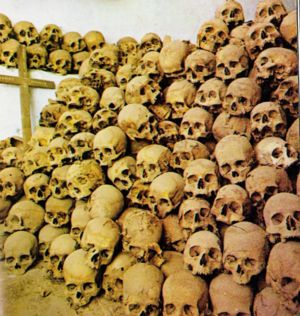
The Amsterdam which Rembrandt found, some 50 years after these events, was
already home to the Venetian-installed Dutch East India Company, founded in
1601-02, whose predatory, anti-nation-state, slave-trading policies Rembrandt
opposed all this life. In fact, in the year Rembrandt was born 1606, the first
Dutch slave ships sailed with their human cargo to the New World But, as a city
of great wealth, Amsterdam was also a center of science, culture, and learning:
The city saw its population quadruple between 1600 and 1650, from 50,000 to
200,000.
Among the world-shaking developments that took place during Rembrandt’s lifetime
was the founding of European settlements in the New World, including the sailing
of the Mayflower in 1620, a voyage which included Dutch citizens. All of Holland
would have known of, and followed, the fortunes of those who sailed, and would
have received news of the progress of the emigre´s in America. New Amsterdam
(now New York) was founded on Manhattan Island in 1624 as an overseas province
of the Dutch Republic.
But unlike the oligarchs Rembrandt portrayed in his “Syndics” painting, who saw
the New World as a “gold mine” for looting, he and his fellow humanists
recognized that the intention behind the colonization of America was to form
commonwealths reflecting the principle of the great ecumenical Council of
Florence (1438-39), at a relatively safe distance from pro-oligarchical cultures
dominating Europe then (and still today).
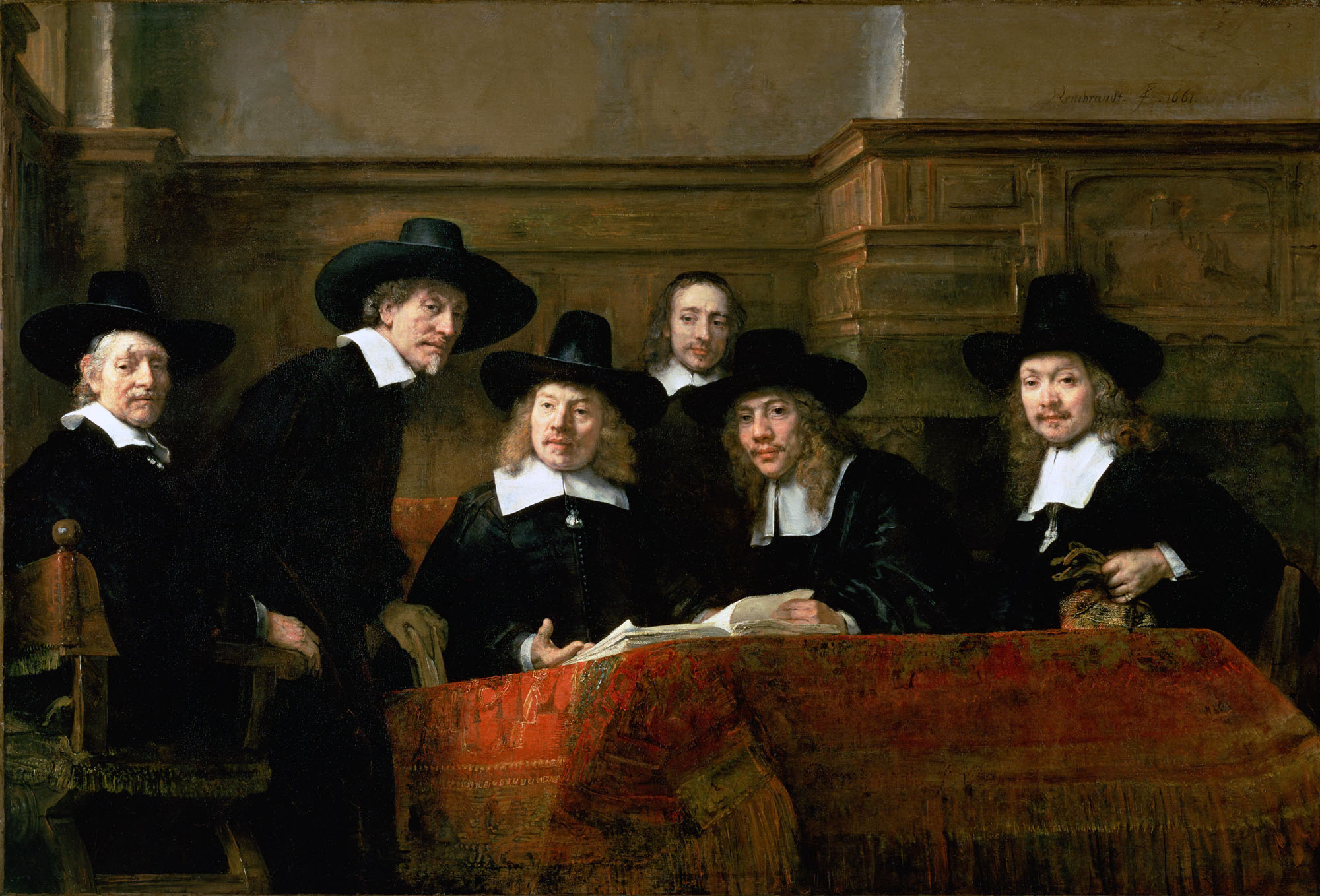
“The Syndics of the
Clothmakers’ Guild” (1662). Rembrandt’s group-portrait brilliantly captures the
bland evil of the leading merchants of Amsterdam—the Venice of the North—as they
tally their profits. The man at the far right is clutching his moneybag, which
has taken on the shape of snake’s heads - Snakes in Suits.
During the same period, in which Rembrandt grew to maturity, the works of
Shakespeare, who died in 1616, began to reach the continent, in translation. To
give only a few examples:
By 1604, Romeo and Juliet appeared in German; in 1621, The Tragedy of Titus
Andronicus was translated into Dutch; a few years later, Julius Caesar, King
Lear, and Hamlet were printed in German; in 1654, the Taming of the Shrew
appeared in Dutch. In fact, there is evidence that Rembrandt may have been in
Shakespeare’s London: He drew the gates the city in the early 1640s, and may
have accompanied his close friend, the rabbi and leading Jewish intellectual in
Europe, Menasseh ben Israel, who went to England to convince Oliver Cromwell to
open the country to Jewish immigration.
Turn now to the key historical turning points in Rembrandt’s life, to see how
they were reflected in his art.
The Partnership With
Uylenburgh
The 1630s were productive years for the young artist. In 1631, he was put in
touch with the Amsterdam art dealer Hendrick van Uylenburgh, by the humanist
networks who had guided his career up till then. That same year, Rembrandt moved
into the home of Henrick and his wife Maria van Eyck, artist bringing with him
two or three of his students. It was then that his career took off.
Between November 1631 and December 1635, he was the most highly sought
portraitist in Amsterdam, painting as many as 50 portraits of the city’s leading
figures. In this same period, he executed “The Anatomy Lecture of Dr. Nicolaes
Tulp” (1632), a group portrait of the top physicians and surgeons; and numerous
biblical histories, including “Belshazzar’s Feast” (1635).
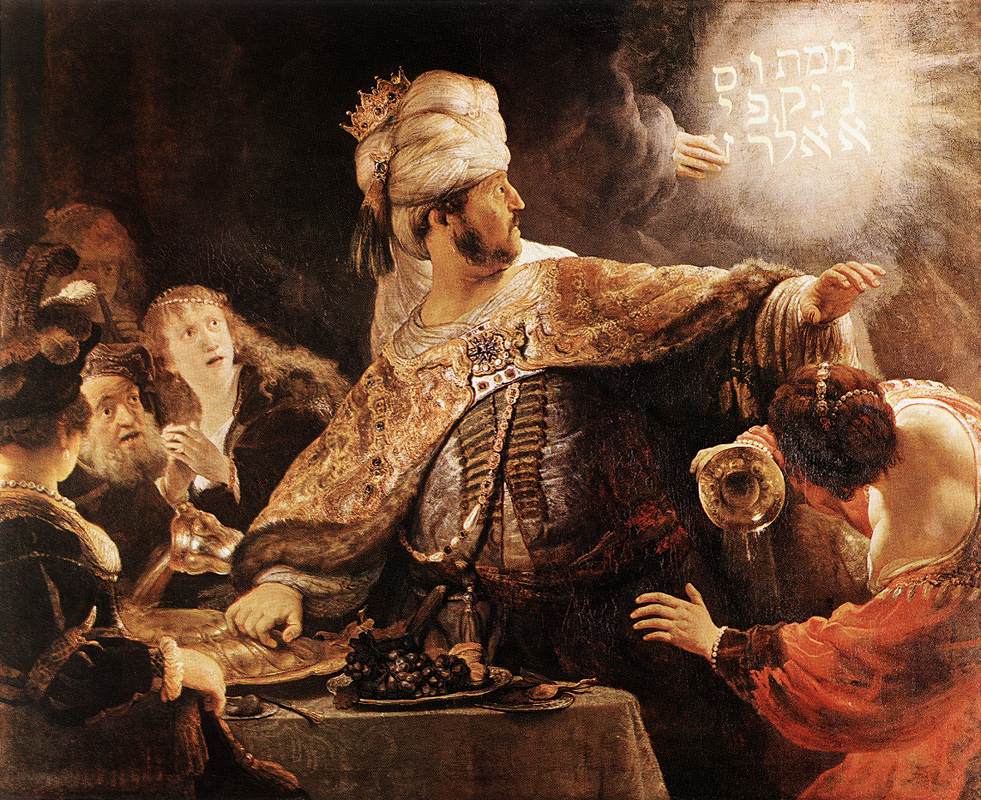
Among his sitters was prominent intellectual Johannes Wtenbogaert, who for half a century had been fighting to create a tolerant, humanist Christian faith. He was the author in 1610, of the “Remonstrance,” which gave its name to the movement whose intent was to bring about reconciliation among the numerous Protestant sects.
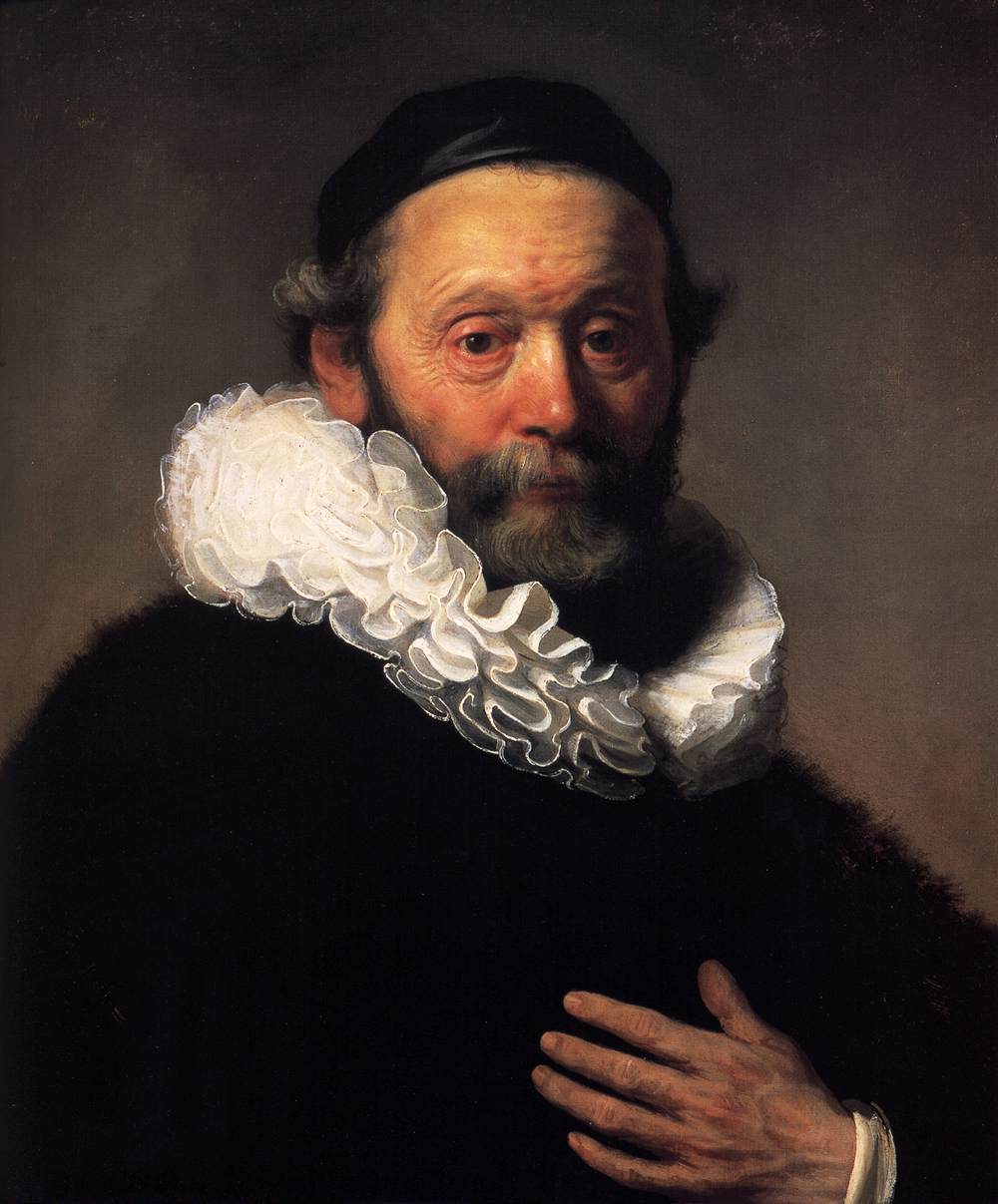
Rembrandt’s partnership with Uylenburgh brought him another kind of happiness as
well: Henrick’s cousin Saskia became Rembrandt’s wife in 1634; she was the
daughter of a burgomaster in Friesland, Romburtus Uylenburgh, who also served as
attorney general of the republic. In the short time of their marriage—Saskia
died in 1642—Rembrandt produced numerous images of his wife, including the 1636
etching reproduced here, “Self-Portrait with Saskia”
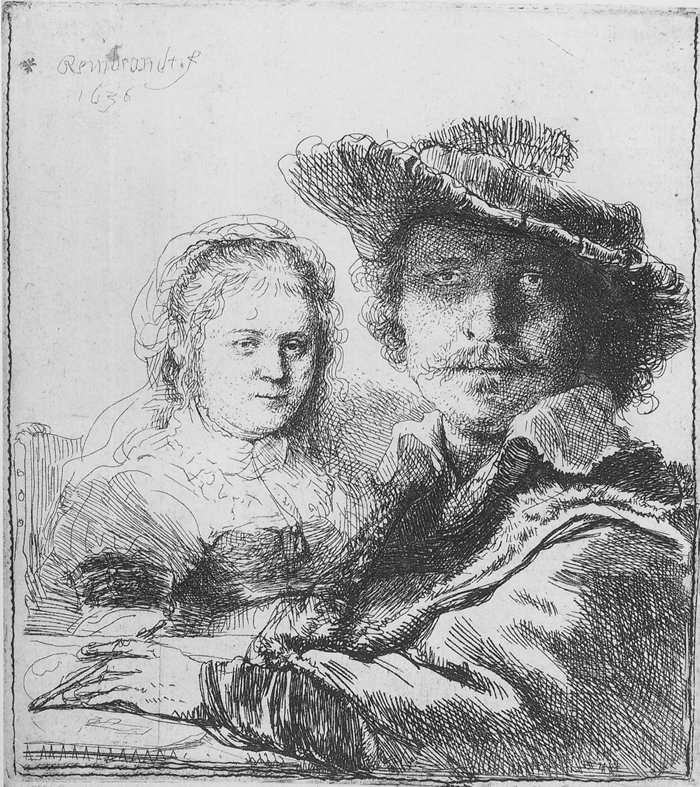
This small etching (41⁄8
× 35⁄8″) is an example, albeit in miniature, of an innovation by Rembrandt in
marriage portraits, in which the wife was depicted participating in the
activities of her husband. Here, a strong light falls on Saskia, whose gaze is
directed ambiguously both at us, and at her young artist husband. He,
contrariwise, is half in shadow, as her light illumines his “better side.” One
art historian has suggested that the portrait could be an illustration of the
Dutch maxim Liefde baart kunst (Love gives birth to art). Rembrandt portrays
himself as looking up from a sketch, for which his wife/muse Saskia is the
model.
“Self-Portrait with Saskia” (1636). Rembrandt presents his wife Saskia as his
better half
Around this time, in 1635, Rembrandt produced one of his most powerful images,
the etching of “Christ Driving the Moneychangers from the Temple”. By this time
virtually the entire class of wealthy Netherlanders was directly involved in the
East Indies trade, or finance, or both.
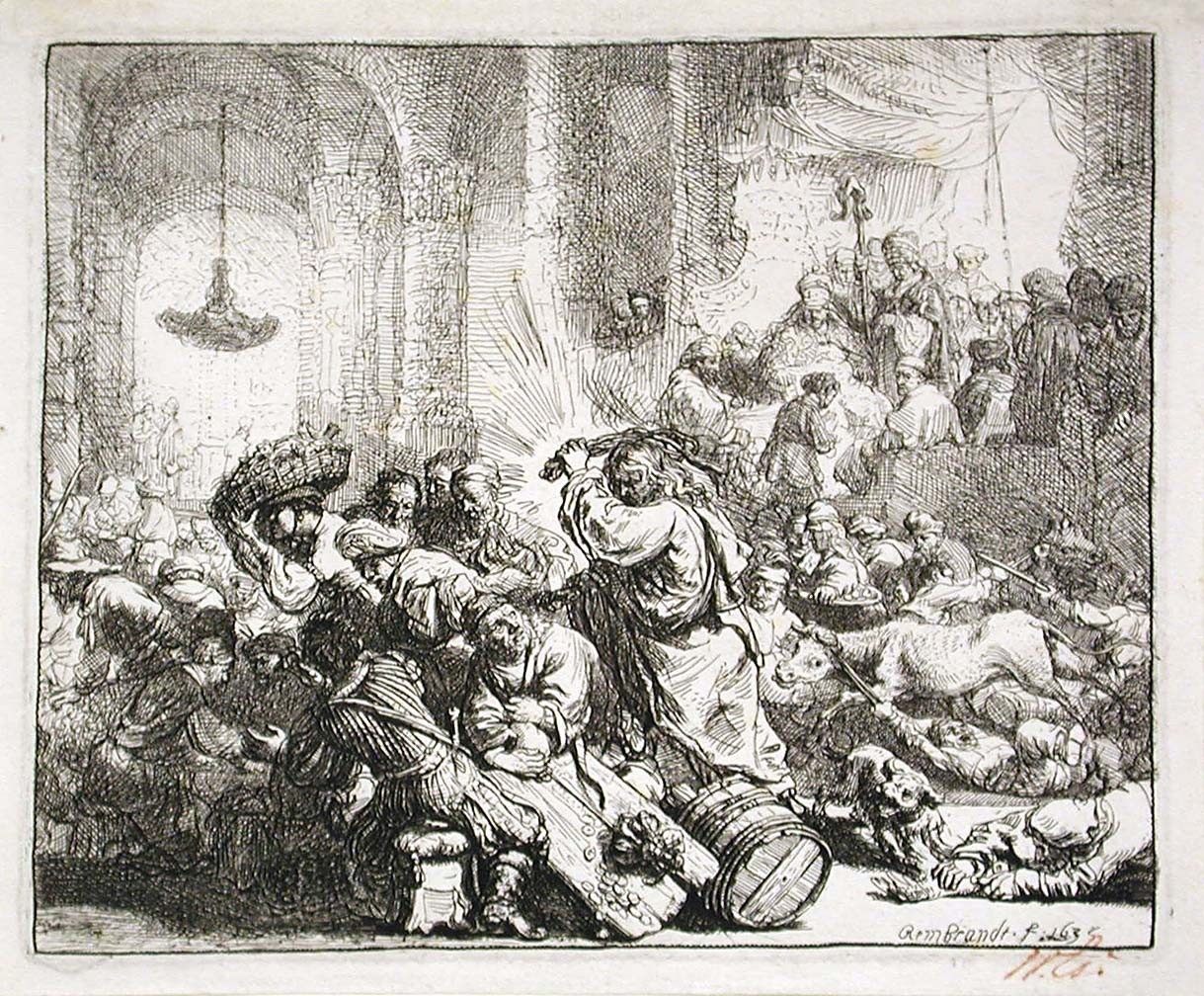
“Christ Driving the
Moneychangers from the Temple” (1635). Rembrandt’s etching is a less-than-subtle
message to the Dutch merchants and moneylenders, who have become “a den of
thieves,” getting fat off the East Indies trade.
The message of this print is unambiguous: Jesus stands at the center of the
composition, wielding a heavy rope, which he swings vigorously, as the usurers
cower before him. The scene is derived from accounts in all four Gospels, as in
Luke (19:46): “My house shall be called the House of Prayer; but ye have made it
a Den of Thieves.” There is a humorous aspect as well, almost slapstick, as one
man is dragged away by a calf (a reference to the Golden Calf? But this one has
a comical expression); another clings desperately to his pouch of money; a dog
barks frantically at Jesus. In the background the priests of the temple look on
with expressions of consternation, disbelief, or wonder. While Rembrandt has
“borrowed” the figure of Jesus from a woodcut of the same subject by Albrecht
Du¨rer, he makes it completely his own, by changing the light source from a
candle on the wall, to having a burst of light emanating from Christ’s hand as
he swings the rope.
In 1641, Rembrandt’s son Titus was born (the couple’s first three children, a
boy, and two girls, died soon after birth); the following year, his beloved wife
Saskia died, and Rembrandt was overcome with grief.
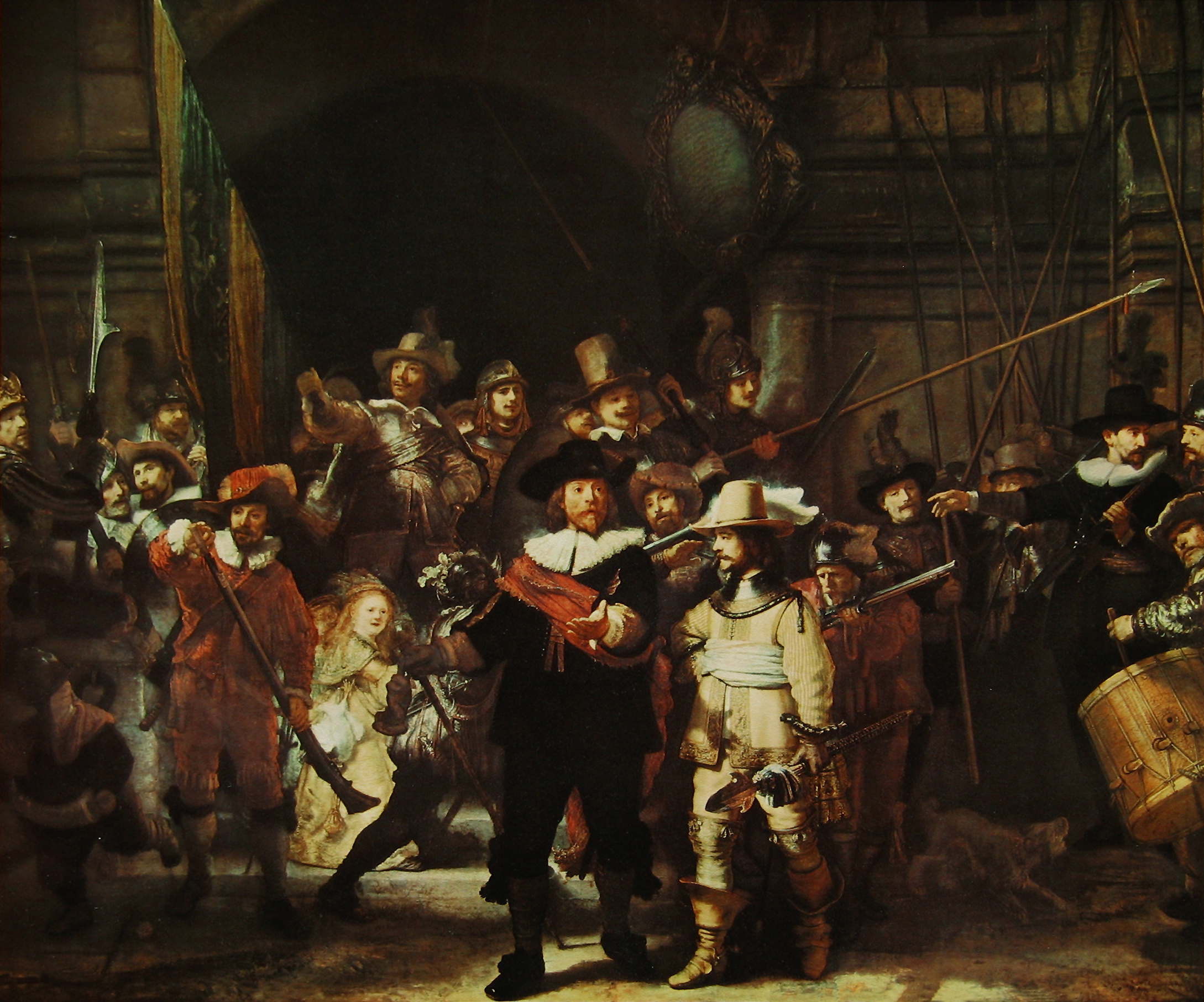
Though he would paint one of
his most celebrated works, the “Nightwatch” (its official title is “The Company
of Frans Banning Cock Preparing To March Out”) that year, after 1642,
Rembrandt’s fortunes took a sharp turn. His big commissions all but dried up,
and over the coming decade, there were few portraits of leading citizens.
The Anglo-Dutch oligarchy, it seems, had no use for Rembrandt.
1648: The End of the Thirty Years War It is hardly possible to imagine the joy
that must have swept over Europe at the signing of the Peace of Mu¨nster/Westphalia
in October of 1648.
Treaty of Westphalia.
The treaty stated: That there
shall be on the one side and the other a perpetual Oblivion, Amnesty, or Pardon
of all that has been committed since the beginning of these Troubles, in what
place, or what manner soever the Hostilitys have been practis’d, in such a
manner, that no body, under any pretext whatsoever, shall practice any Acts of
Hostility, entertain any Enmity, or cause any Trouble to each other; neither as
to Persons, Effects and Securitys neither of themselves or by others, neither
privately nor openly.
That they shall not act, or permit to be acted, any wrong or injury to any
whatsoever; but that all that has pass’d on the one side, and the other, as well
before as during the War, in Words, Writings, and Outrageous Actions, in
Violences, Hostilitys, Damages and Expences, without any respect to Persons of
Things, shall be entirely abolish’d in such a manner that all that might be
demanded of, or pretended to, by each other on that behalf, shall be bury’d in
eternal Oblivion - Treaty of Westphalia.
In a number of etchings and paintings from this period, Rembrandt gives visual
form to the idea of compassion, or agape¯, expressed in the Treaty of
Westphalia. The most famous of these is his magnificent etching, “Christ Healing
the Sick,” better known as the “Hundred Guilder Print” (known by this name
because of the unusually high price it fetched). The work, done in etching,
drypoint, and engraving, took several years to complete.
“Christ Healing the Sick” (1648). This etching, is one of Rembrandt’s most celebrated, also done the year of the Peace of Westphalia. The story is based on the Gospel of Matthew: “And great multitudes followed him; and he healed them there.”
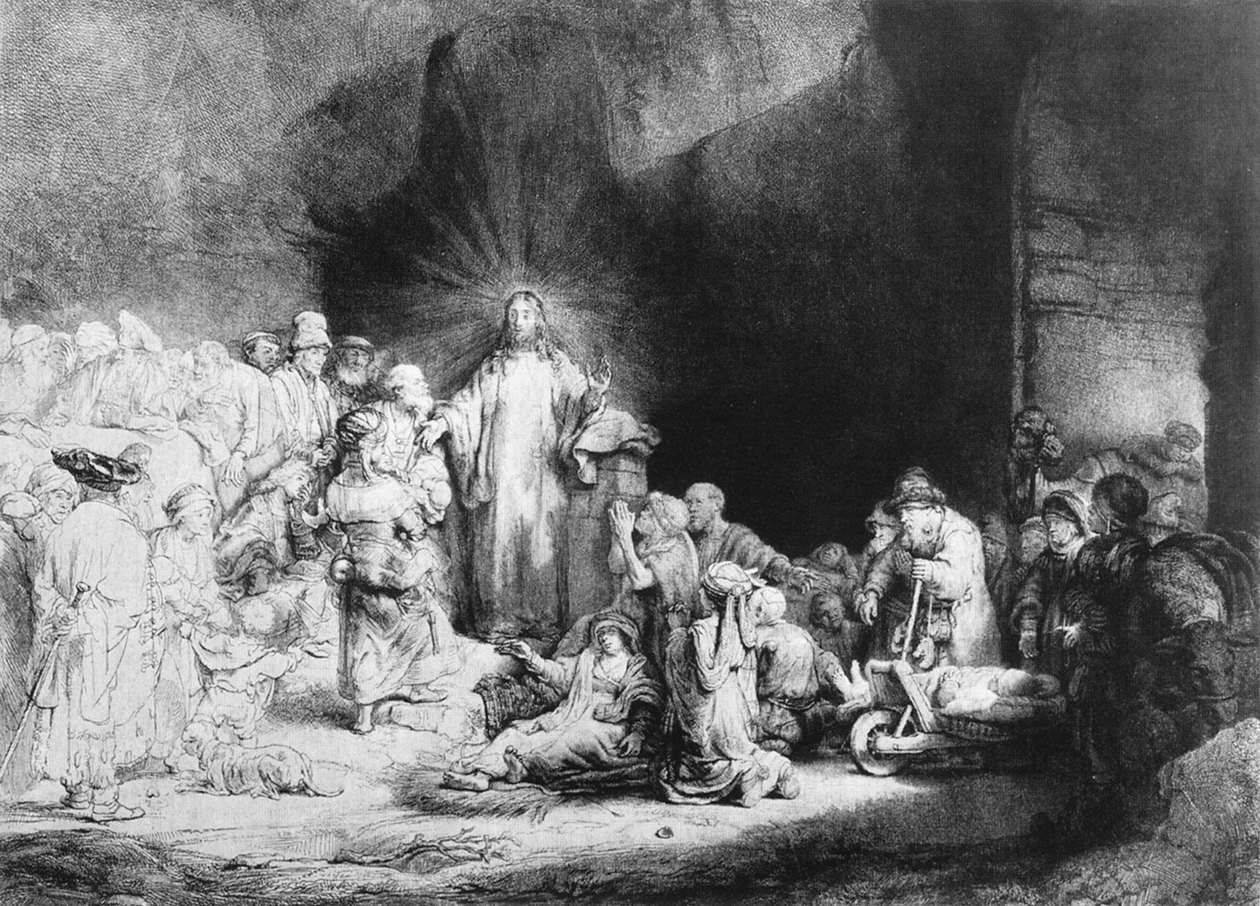
The scene places Christ at the
center of the composition; He is illuminated by a strong light from the left,
outside the space of the picture, which falls over the group to His right; but
He also emanates a powerful light from within: By this light we can clearly
“read” the expressions and thoughts on the faces of those listening who come
forward to hear him, and to be healed, both physically and spiritually. He is
the “organizing principle” of the drama. The script Rembrandt has chosen for its
dramatic potential, is taken from the Gospel of Matthew (19:1-30): “And great
multitudes followed him; and he healed them there.” From the right, a crowd
enters through the city gate: They are the sick, the crippled, the aged, who
beseech His help. At the left of the stage, the Pharisees, the religious
fundamentalists, who demand to know Christ’s “position” on “single issues,” like
divorce: “The Pharisees also came unto him, tempting him, and saying unto him,
‘Is it lawful for a man to put away his wife for every cause?’ ” In front of the
Pharisees, two mothers approach Christ, offering their children for His
blessing, as Peter, at Christ’s right hand, tries to hold the women back, but
Christ reproaches Peter: “Thenwere there brought unto him little children, that
he should put his hands on them, and pray: and the disciples rebuked them But
Jesus said, ‘Suffer little children, and forbid them not, to come unto me: for
of such is the kingdom of heaven.’ ”
Seated between the two women, a youth is deep in thought; he is the rich young
man, who came to Christ seeking eternal life. Jesus tells him: “If thou wilt be
perfect, go and sell that thou hast, and give to the poor, and thou shalt have
treasure in heaven: and come and follow me.” But when “the young man heard that
saying, he went away sorrowful: for he had great possessions.”
If he had said, "Buy the Energy Enhancement Course" it may well have been better, but Money is the Great Blockage. Money is one of the major stoppages on the path of Illumination.
Jesus tells his disciples, “It
is easier for a camel to pass through the eye of a needle, than for a rich man
to enter into the kingdom of Heaven.” Get rid of your attachment to Money!! Lo and behold!
As we turn our eyes to the right-hand side of the stage, just inside the gate,
there is the camel; the rich man is at the far left, with his back to the
viewer; each of these is as far from Christ as can be, and still be on stage.
Rembrandt conveys Matthew’s summation of this verse, “many that are first shall
be last; and the last shall be first,” by presenting the poor and the sick with
more precise definition, and greater substance, than the rich and powerful. In
doing so, he gives us a rich visual metaphor for the idea of the common good,
which imbues the Treaty of Westphalia.
The Bankruptcy
In 1656, Dutch East India Company shares plummeted on the Amsterdam Exchange and
many investors were ruined.
Like all the elite orchestrated bubbles, someone knows when it is going to
happen. Their purpose is to, "fleece the sheep" who have been encouraged by the
previous years of profit to invest more and more of their Money. An advanced Ponzi Scheme which
historically has worked well for all time as it functions through greed,
designed to steal the money of the middle classes and their pension funds.
Among them was Rembrandt van Rijn, now 50, who was declared bankrupt and whose
possessions were put up for sale. The process leading to Rembrandt’s bankruptcy
however, was not so simple; his finances unravelled over the decade of the
1650s, as powerful patrons abandoned him, and the vultures closed in. In January
1653, with the country at war with England, and finances tight, Rembrandt’s
creditors called in their loans. The details of all this are somewhat murky,
although certain facts are known. In order to hold off his creditors, he
borrowed additional funds, while a large portion of his debt was sold off to
that day’s version of hedge fund traders. Things continued to fall apart; two
sales of his household goods took place by the late Summer of 1655 Finally, in
November of 1657, Rembrandt was forced to sell off his house, and his entire art
collection, a collection he had spent a lifetime gathering —dozens of Du¨rer and
Mantegna prints; copies and engravings after the greatest works of art in
Italy—those of Leonardo, Raphael, and others, as well as Arisa quarter century’s
production of his etched copper plates.
There was a decidedly
political motivation behind the financial persecution of Rembrandt; the key
moneylender who finally called in the chips, was Gerbrand Ornia, one of the
richest men in Amsterdam, and a relative of one of Rembrandt’s earlier
protectors, Cornelis Witsen. Witsen who held the post of sheriff, was described
in a chronicle of the time, as a drunkard and a crook, who stole from the public
coffers. Ultimately, it was Witsen and Ornia who forced Rembrandt to sell his
house for a mere 300 guilders One explanation for all this, was that the two
moneylenders were enemies of Rembrandt’s patron and protector, the Remonstrant
Willem Schrijver
In defiance of his tormentors, Rembrandt continued to work throughout this
period. Among his most powerful works are portraits of his common-law wife
Hendrickje, and his son Titus

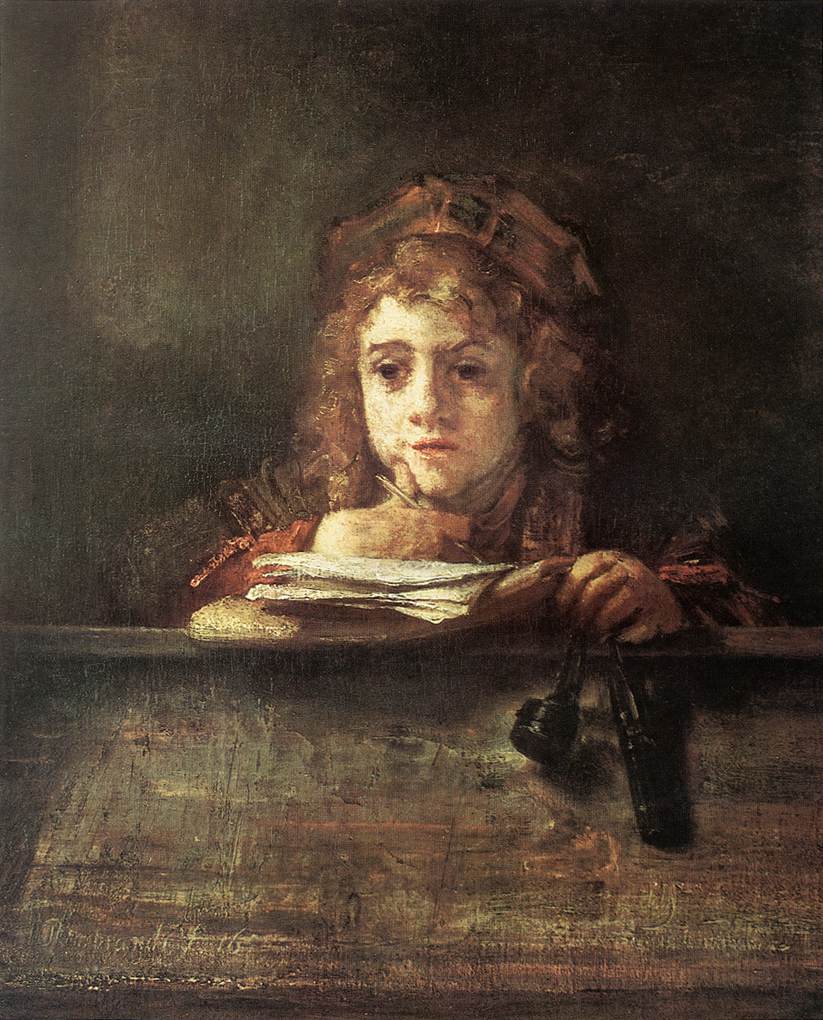
—these portraits are among the
most loving and sublime of all Rembrandt’s output. Clearly, he found refuge with
his family from his financial and political battles. A beautiful portrait of
Titus from 1655, show his son, then about 14 years old, deep in thought, pen in
hand, and papers before him either for writing or drawing (Rembrandt had taught
him to draw and paint), as a soft light falls on his face and on the sheaf of
paper on the desk he leans on.
But Rembrandt also continued to wield his mighty weapons against his political
enemies: In 1653, he painted “Aristotle Contemplating the Bust of Homer” the
astonishing masterpiece, which demolishes the sophistry of Aristotle, who is,
not surprisingly, the official philosopher of Dutch Calvinism. Here, we see
Aristotle, his right arm extended, hand resting on the head of a bust of Homer.
But irony of ironies: It is Aristotle who is blind—his eyes don’t see— while
Homer, who was sightless, “sees” with his mind, his head bathed in light.
Perhaps Aristotle, who claimed that all knowledge is derived from the senses,
thinks he can learn from Homer by placing his hand on the poet’s head. Pity the
poor philosopher, says the Rembrandt speaking to us from this portrait: All his
fame, the heavy gold chain he wears, his splendid garments, will never bring him
closer to the truth.
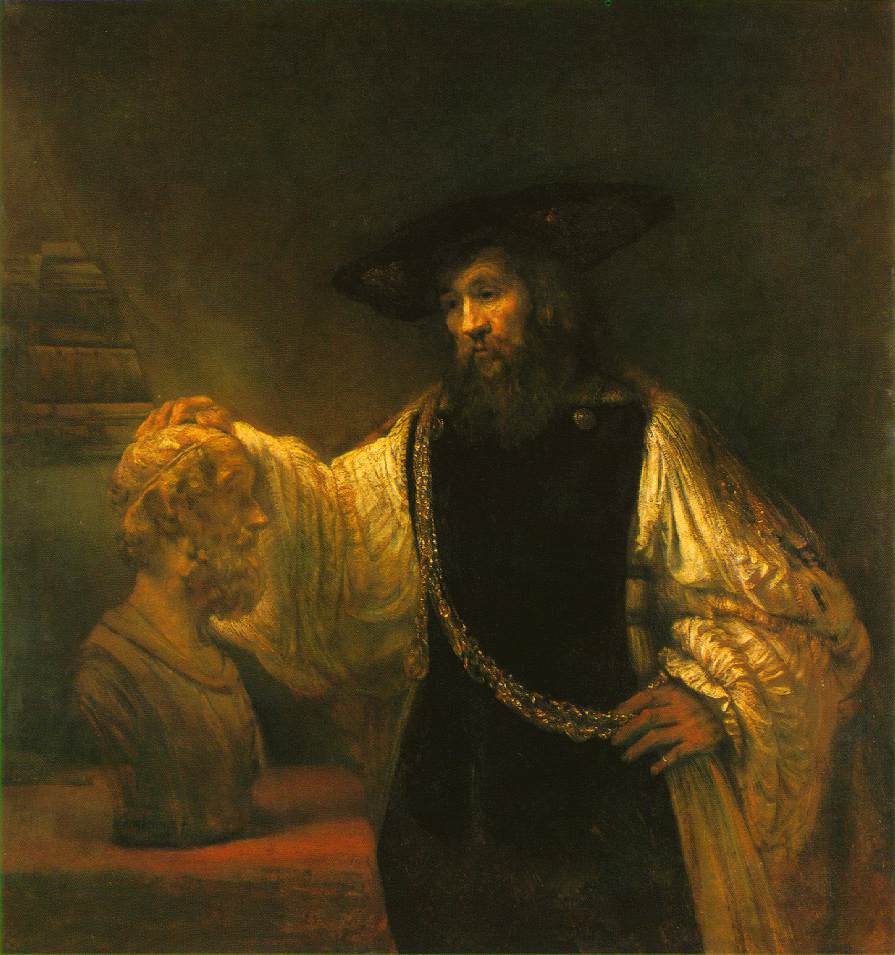
Rembrandt’s painting, “Aristotle Contemplating a Bust of Homer” (1653),
demonstrates his deep knowledge of history, literature, and philosophy:
Aristotle only “knows” what he can learn through his senses because he does not
believe in the Spirit and indeed hides the Spirit from the rest of Humanity, but
the blind poet Homer, sees with his mind using the Light of the Soul -
Illumination.
Aristotle, and agent of the
Babylonian Secret Service, was responsible for the poisoning of Alexander the
Great. His other work was the, "Dumming Down" of all science and mathematics
through preference for logic and deduction, and the ignoring of, "Hypothesis"
which alone can give that Quantum Leap of Genius.
For the ruling elite to
maintain superiority over the rest of the population is the reason behind
Culling the intelligent through pogroms like the Inquisition, The creation of
endless Wars solely to Bomb populations back into the stone age, and sending
their intelligent sons to be traumatised and killed off in war - also through
Famine Creation, Poverty, Dummed Down Education, and Low Scientific Level... The
ancient Oligarchic methodology for retaining their power over the whole World for all time.
This is why it is the way that it is.
The Phoenix
By 1658, Rembrandt had begun to emerge from bankruptcy and to put his affairs in
order once again. He had lost his home and his great art collection; and his
mistress Hendrickje had been expelled from the Dutch Reformed Church for
living in sin with the artist. His former patrons and friends had abandoned him.
But Rembrandt was not defeated. That year he produced one of his most personal
and innovative prints, “An Allegory: The Phoenix” (Figure 8). In this etching,
Rembrandt takes the mythical story of the fabled bird that consumes itself, and
then rises from its own ashes, restored to youth.
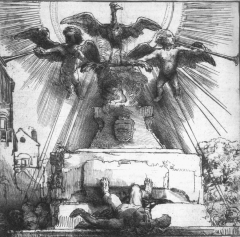
“An Allegory: The Phoenix” (1658). Rembrandt made this etching as he began to
emerge from a long period of personal and financial tragedy. But he was
undaunted. Like the legendary Phoenix, he rose from the ashes, and went on to
produce his most sublime works over the next decade.
Although Rembrandt had
depicted hundreds of images from the life and Passion of Christ, surprisingly,
he produced only one Resurrection, and that, at an early age (1630s). Perhaps
the “Phoenix” was Rembrandt’s secular metaphor for his own “resurrection” from
the humiliation and defeats he had suffered.
In Rembrandt’s image, the Phoenix stands atop a huge pedestal, as two putti
blare forth the news on their trumpets that he has risen; a huge Sun, whose rays
penetrate the composition, rises behind him. A youth, whose dramatically
foreshortened figure lies at the base of the pedestal, and whose head extends
over the edge of the picture into our space suggests nothing so much as a
Classical Greek statue, now fallen.
But Rembrandt’s Phoenix is not the splendid bird of myth; missing are the sharp
beak, long talons, and luxuriant plumage. Instead, he is an “ugly duckling,”
whose ability to fly is by no means certain. Surely, this is Rembrandt himself,
risen from the ashes of his hardships, ready to take on the world again. He is
conscious of his immortality; he knows he will outlive his enemies.
Self-Portraits
No other artist known to us reproduced his own image so many times (50-60
paintings; dozens of drawings, engravings, and etchings) as did Rembrandt, over
such an extended period of time; in fact, it was rare for an artist of
Rembrandt’s time to depict his own image at all. For example, neither of his
famous contemporaries, Johannes Vermeer (1632-75) and Franz Hals (c. 1580-1666),
produced a single self-portrait. Rembrandt has left us his autobiography in
these critical self-examinations.
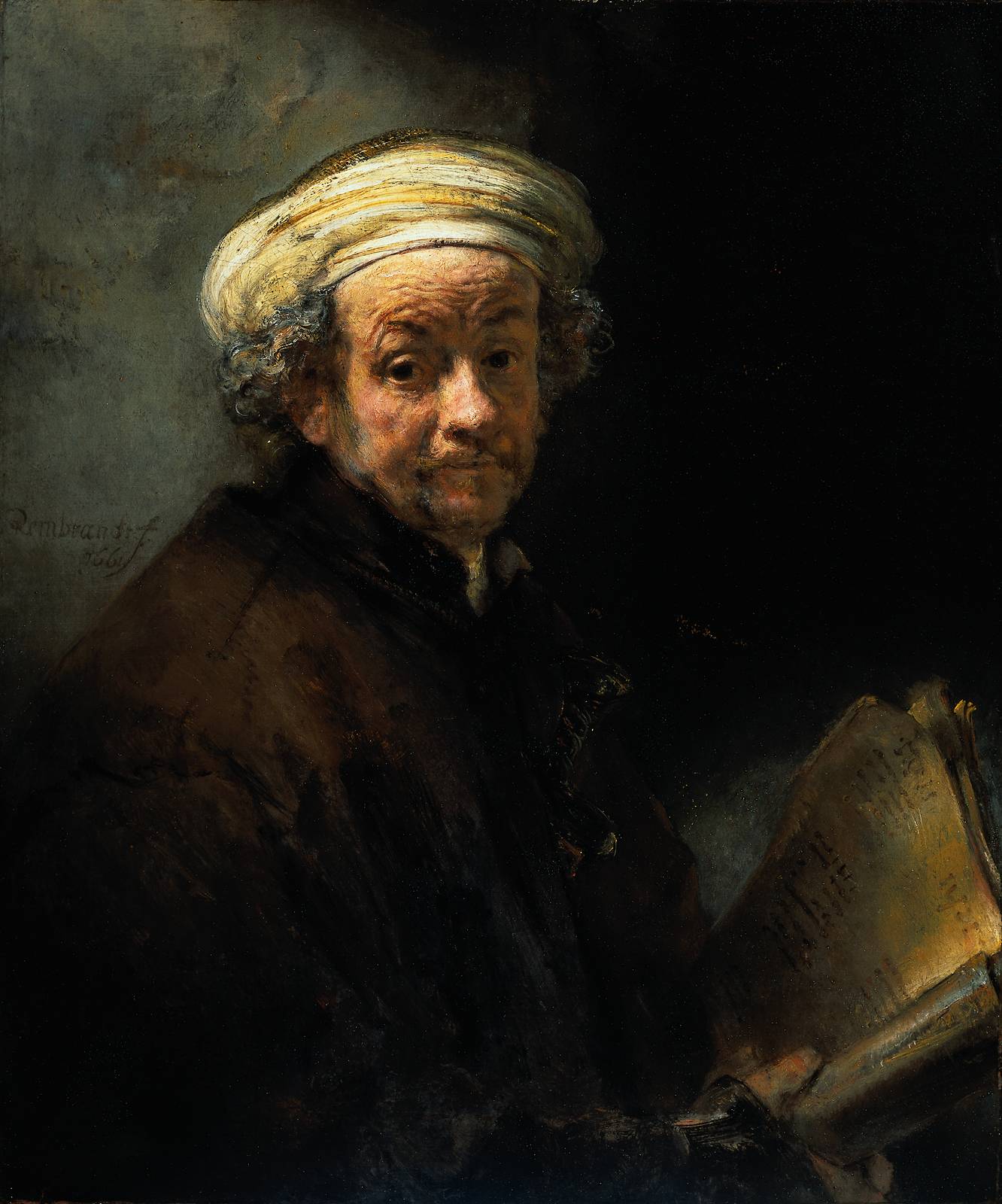
“Self-Portrait as the Apostle Paul” (1661). Rembrandt clearly identified with
Paul; like Paul, the artist lived not for the pleasures of this world, but to
create something immortal and universal.
In 1661, Rembrandt painted a “Self-Portrait as the Apostle Paul” That
Rembrandt saw St. Paul as an “alter ego” or “soul brother” is shown by the fact
that he executed a number of paintings and etchings of the saint, including one
of Paul in prison. The universality of Paul’s mission, to build a movement of
Jesus-followers within the Roman Empire, no matter the threat to his personal
safety, and ultimately, his martyrdom, resonated strongly with Rembrandt.
Unlike earlier portrayals of Paul, Rembrandt did not depict him as Saul, at the
moment of his Damascus Road conversion, but later, during the period of his
evangelization, in prison, and writing his Epistles. In this work, a bright
light illuminates the Apostle’s features; the brightest light though shines on,
and from, his illuminated mind.
The only other bright spot is the book which he holds (this would most likely be
the Greek-language Old Testament; the Gospels would not be written down for at
least 20 years after Paul’s ministry. Pauls letters were the first writings of
the Apostles). Paul/Rembrandt’s expression is complex: In it, there is
resignation, humility, even sadness, but most of all, a powerful sense of
compassion. Only the deepest humanity, and the faith that gives him the courage
to confront his immortality, can sustain him.
The importance of compassion, as defined by the great poets and philosophers of
the German Classic: Schiller, Lessing, and Mendelssohn, in the development of a
beautiful soul. The beautiful soul, “is the happiest when other people become
beautiful souls, when other people are creative, when other people accomplish
all the things the beautiful soul wants to accomplish for him or herself.”
Could there be a better example of this idea than that immortal, beautiful soul, Rembrandt van Rijn?

Other Sources:
Clifford Ackely, Rembrandt’s Journey: Painter, Draftsman, Etcher (MFA
Publications, 2003).
Paul Crenshaw, Rembrandt’s Bankruptcy: the Artist, His Patrons, and the Art
Market in Seventeenth-Century Netherlands (Cambridge, U.K.:Cambridge University
Press, 2006).
Jonathan I. Israel, The Dutch Republic: Its Rise, Greatness, and Fall 1477- 1806
(Oxford, U.K.: Clarendon Press,
1988).
Simon Shama; Rembrandt’s Eyes (New York: Knopf, 1999).
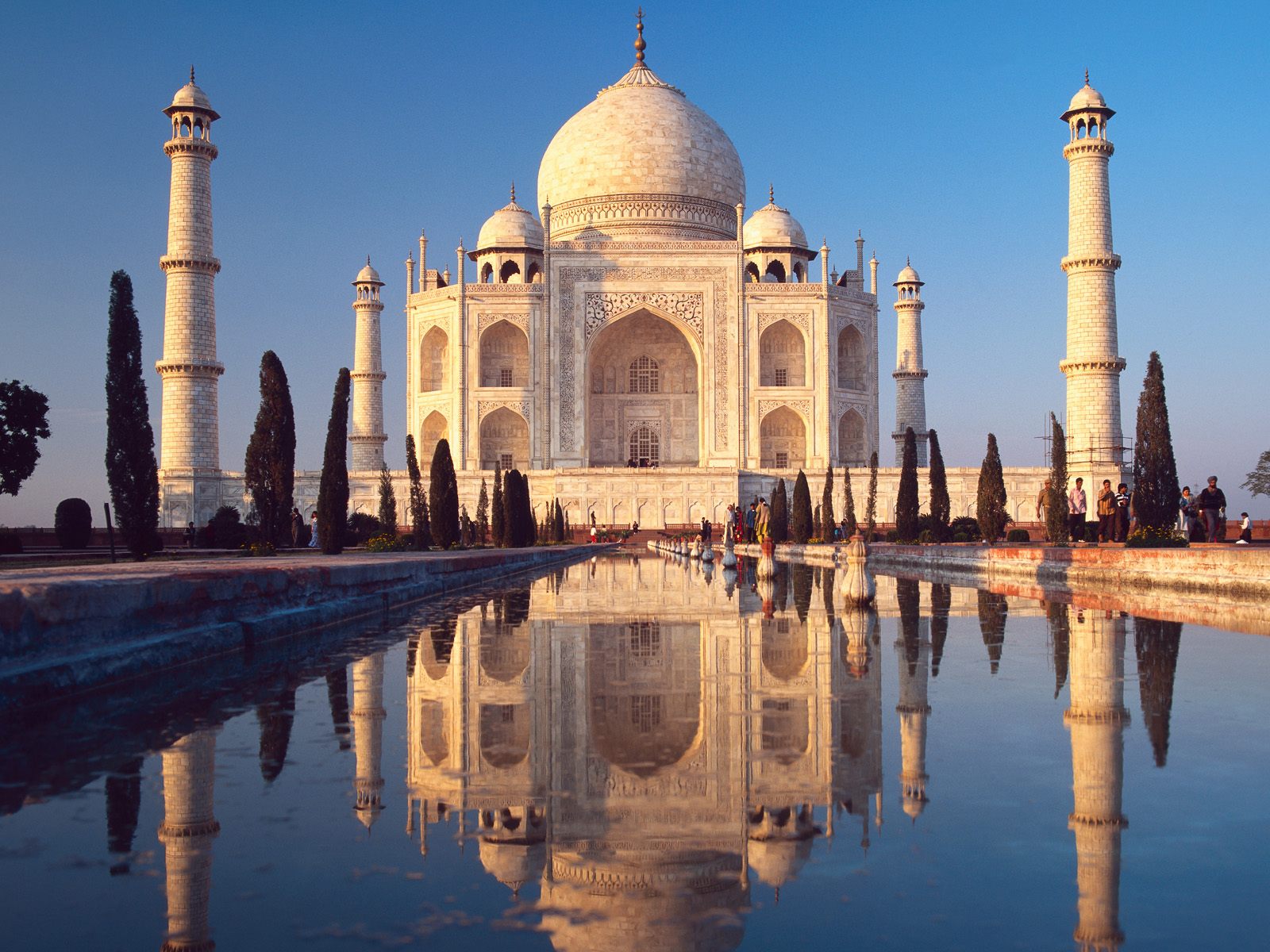
ENERGY ENHANCEMENT IS THE MOST ADVANCED METHOD OF SPIRITUAL ACCELERATION
COME AND GET EXPERIENCED!
EMAIL sol@energyenhancement.org
The Yoga Sutras of Patanjali..
SATCHIDANAND'S ENERGY ENHANCEMENT COMMENTARY AND OTHER ARTICLES ON THE YOGA SUTRAS OF PATANJALI -
ENERGY ENHANCEMENT TEACHES THE ADVANCED TECHNIQUES OF PATANJALI RAJA YOGA OF HATHA YOGA, PRANAYAMA, MEDITATION, SAMADHI AND SAMYAMA LEADING TO PSYCHIC POWERS, IMMORTALITY, KAIVALYA OR LIBERATION, ILLUMINATION, ENLIGHTENMENT - READ THE COMMENTARY - FIND OUT ABOUT PATANJALI
THE ENERGY ENHANCEMENT SECRET KNOWLEDGE OF THE NEOPLATONIC ELITE DIRECTORY
The survival of the species demands a revival of the "secret knowledge" of the Neoplatonic elite. That knowledge must not only be revived, but as we do here, must be situated within and updated by appropriate terms of modern scientific knowledge.
MAN IS A LIVING SPARK OF GOD - IT IS THAT AND ONLY THAT WHICH PREVENTS THE CONCEPT OF SLAVERY AND GENOCIDE FOR THE HUMAN HERD

and - http://www.energyenhancement.org/REMBRANDT-ILLUMINATED-SAINT.htm
THE ANTAHKARANA AND EVOLUTION - it is the projected future which defines the present.
THE ANTAHKARANA AND EVOLUTION - We can only be that which we are willfully committed to become.
UNBLOCK THE CHAKRAS ABOVE THE HEAD UNBLOCK THE ANTAHKARANA AND THE SUPRA GALACTIC ORBIT
It seems that human extinction events always proceed in order to destroy the violent so that people of the Heart, who would never hurt anyone, can move onwards to wards that Initiation event of Enlightenment.
And the Initiation of Enlightenment is also the Great Extinction Event.
In order to become Enlightened, there must be an extinction, a destruction, a transmutation of the Ego.
This is the destruction of the bad guys on the field of Kurukshetra where Arjuna with the help of his soul, Krishna, destroyed all of his Ego.
"The Selfish Competitive Ego is just a collection of Energy Blockages" - Swami Satchidananda, Guru of Swami Satchidanand
All the energy blockages, all the sub-personalities are removed in an extinction event which precedes the greater progress towards Spiritual Energy Intensity, Flux Density, the psychic charge of the Illuminated, Enlightened Sage.
Instead, now, seeing the truth, let us take a little time for ourselves, for meditation.
MORE ARTICLES? GO HERE...
SATCHIDANAND - "TAKE WHAT IS IN MINE HAND"

SPEED UP THE PROCESS OF ENLIGHTENMENT

DEVI MEDITATING ON THE BEACH

The Bay and Beach of Cala Montgo just 8 minutes walk from the SOL Center for those times between sessions when you want to recover from the course.
THE MOST ADVANCED AND PRODUCTIVE MEDITATION COURSE IN THE WORLD AS SAID IN THE TESTIMONIALS OF OUR PAST STUDENTS!!!
TEACHING IN EASY STEPS...
LEVEL ONE - THE GAINING OF ENERGY
MEDITATION, SHAKTIPAT, ENERGY CIRCULATION, THE KUNDALINI KRIYAS, THE FIVE ELEMENTAL PATHS OF THE CHI OF CHINESE ALCHEMICAL TAOISM, THE GROUNDING OF NEGATIVE ENERGIES, ACCESS TO KUNDALINI ENERGY, CHECK OUT FOOD, REMOVE ENERGY BLOCKAGES, STRONG PSYCHIC PROTECTION, LEARN THE MERKABA, PYRAMID PROTECTION, POWER TOWER PROTECTION, THE BUDDHAFIELD, CREATE THE ANTAHKARANA, SOUL FUSION, MONADIC INFUSION, LOGOS INFUSION, SIRIAN INFUSION, THE AVATAR OF SYNTHESIS!!!
EXPERIENCE MORE!!!
EMAIL
sol@energyenhancement.org
INTENSIVE VIDEO COURSE LEVEL ONE STREAMING VIDEO -
SPECIAL OFFERS..
EMAIL sol@energyenhancement .org for details
BUY NOW!!
ENERGY ENHANCEMENT ON THE COSTA BRAVA

ENERGY ENHANCEMENT WITH JEAN, ON THE COSTA BRAVA, SPAIN
ENERGY ENHANCEMENT LIFE GAMES
- A Game Worth Playing
THIS ARTICLE IS CONCERNED with games and aims.
It has been stated by Thomas Szasz that what people really need and demand from
life is not wealth, comfort or esteem but games worth playing.1 He who cannot
find a game worth playing is apt to fall prey to accidie, defined by the Fathers
of the Church as one of the Deadly Sins, but now regarded as a symptom of
sickness. Accidie is a paralysis of the will, a failure of the appetite, a
condition of generalized boredom, total disenchantment—"God, oh God, how weary,
stale, flat and unprofitable seem to me all the uses of this world!" Such a
state of mind, Szasz tells us, is a prelude to what is loosely called "mental
illness," which, though Szasz defines this illness as a myth, nevertheless fills
half the beds in hospitals and makes multitudes of people a burden to themselves
and to society.
Seek, above all, for a game worth playing. Such is the advice of the oracle to
modern man. Having found the game, play it with intensity—play as if your life
and sanity depended on it. ( They do depend on it. ) Follow the example of the
French existentialists and flourish a banner bearing the word "engagement."
Though nothing means anything and all roads are marked "No EXIT," yet seem to
offer a game worth playing, then invent one.2 For it must move as if your
movements had some purpose. If life does not be clear, even to the most clouded
intelligence, that any game is better than no game.
What sort of games does life offer? We can study Stephen Potter for tips on
"gamesmanship." We can ( and should) read Eric Berne on Games People Play.3 If
we have mathematical inclinations we can look into the work of John von Neumann
or Norbert Wiener, who devoted some of their best thinking to the elaboration of
a theory of games.4
From the Hindu scriptures we can learn of the cosmic game, the alternation of
lila and nitya, the Dance of Shiva, in which primordial unity is transformed
into multiplicity through the constant interplay of the three faunas. In the
works of the mystic novelist, Hermann Hesse, we can read of the Magic Theater in
which all life games are possible or of the game of games (Glassperlenspiel) in
which all elements of human experience are brought together in a single
synthesis."
What is a game? An interaction between people involving ulterior motives? Berne
uses the word in this sense in Games People Play. But a game involves more than
this. It is essentially a trial of strength or a trial of wits played within a
matrix which is defined by rules."' Rules are essential. If the rules are not
observed, the game ceases to be a game at all. A meaningful game of chess would
be impossible if one player insisted on treating all pawns as queens.
Life games reflect real life aims. And the games men choose to play indicate not
only their type, but also their level of inner development. Following Thomas
Szasz ( more or less) we can divide life games into object games and meta-games.
Object games can be thought of as games played for the attainment of material
things, primarily money and the objects which money can buy. Meta-games are
played for intangibles such as knowledge or the "salvation of the soul." In our
culture object games predominate. In earlier cultures meta-games predominated.
To the players of meta games, object games have always seemed shallow and
futile, an attitude summarized in the Gospel saying: "What shall it profit a man
if he gain the whole world and lose his own soul?" To the players of object
games, meta-games seem fuzzy and ill-defined, involving nebulous concepts like
beauty, truth or salvation. The whole human population of the earth can be
divided roughly into two groups, meta-game players and object-game players, the
Prosperos and the Calibans.8 The Ascenders and the Descenders The two have never
understood one another and it is safe to predict that they never will. They are,
psychologically speaking, different species of man and their conflicts
throughout the ages have added greatly to the sum of human misery.
Life Games
ALL games have an
important and probably
decisive influence on
the destinies of the
players under ordinary
social conditions; but
some offer more
opportunities than
others for lifelong
careers and are more
likely to involve
relatively innocent
bystanders. This group
may be conveniently
called Life Games Which
we work on in Energy
Enhancement Level 3. It
includes "Addict,"
"Defaulter," "Kick Me,"
"Now I've Got You, You
Son of a Bitch," "See
What You Made Me Do" and
their principal
variants. They merge on
the one side with
marital games, and on
the other with those of
the underworld. All
these games are Implant
Blockage created
Distractions which are a
total waste of time,
only removable by Energy
Enhancement meditation
Based techniques.
Their use is promoted by Hollywood Advertising (Psychopathic Killing as an advertisement for people to join the Army) Bollywood Advertising (Dancing and sweet love to get you to enter into the Householder Game and create a massive Population so that a massive army can be generated) and childish novels as attention distracters from the Master Game.
Life games are a big subject to do with purpose, one of the energies of the Will, of the Avatar of Synthesis.
What is your purpose, your mission in this lifetime?
What is distracting you from your purpose?
Table I.
|
META GAMES AND OBJECT GAMES PLAYED BY PROSPEROS AND CALIBANS BY ASCENDERS AND DESCENDERS BY FORREST GUMP AND FORREST GUMP'S GIRLFRIEND |
|
| GAME | AIM |
| MASTER GAME | INTEGRATION AND SYNTHESIS - SOUL, MONAD, LOGOS, AVATAR OF SYNTHESIS INFUSION - ILLUMINATION |
| WORLD INTEGRATION | INTEGRATION AND SYNTHESIS |
| RELIGION GAME | SALVATION |
| SCIENCE GAME | KNOWLEDGE |
| ART GAME | BEAUTY |
| HOUSEHOLDER GAME | RAISE FAMILY |
| NO GAME | NO PURPOSE |
| HOG IN TROUGH | WEALTH |
| COCK ON DUNGHILL | FAME |
| MOLOCH GAME | WAR, GLORY OR VICTORY |
The big celebration, the wedding or housewarming, takes place not when the debt is discharged, but when it is undertaken.
What is emphasized on TV, for example, is not the middle-aged man who has finally paid off his mortgage, but the young man who moves into his new home with his family, proudly waving the papers he has just signed and which will bind him for most of his productive years.
After he has paid his debts—the mortgage, the college expenses for his children and his insurance—he is regarded as a problem, a "senior citizen" for whom society must provide not only material comforts but a new "purpose."
This is the life of Nothing. You come into this world with Nothing; make some money, pay the bills for the hospital and you leave with Nothing!!
As this is
written, a sow
bug crawls
across a desk.
If he is turned
over on his
back, one can
observe the
tremendous
struggle he goes
through to get
on his feet
again. During
this interval he
has a "purpose"
in his life.
When he succeeds, one can almost see the look of victory on his face. Off he goes, and one can imagine him telling his tale at the next meeting of sow bugs, looked up to by the younger generation as an insect who has made it.
And yet mixed with his smugness is a little disappointment. Now that he has come out on top, life seems aimless. Maybe he will return in the hope of repeating his triumph. It might be worth marking his back with ink, so as to recognize him if he risks it. A courageous animal, the sow bug. No wonder he has survived for millions of years.
This is the Existential Position of Eric Berne which is true of any game except the Master Game of Illumination.
All games are played according to rules. In man-made games such as poker the
rules are imposed by the laws of probability (odds against a straight are 254 to
1, against a flush, 508 to 1.) or they are dependent on special limitations
(pawns and other pieces in chess each having its own move). In life games, rules
are imposed by natural, economic or social conditions. The player must both
remember the aim and know the rules. Apart from this, the quality of his game
depends on his own innate characteristics.
Great chess masters are born, not made. Great football players are bound to have
certain physical characteristics. The game a man can play is determined by his
type ( of which more later). Ho who tries to play a game for which his type does
not fit him violates his Own essence with consequences that are often
disastrous.
The Low Games
The main types of life
games are shown in Table I.
Hog
in Trough is an object
game pure and simple. The aim is to get one's nose in the trough as deeply as
possible, guzzle as much as possible, el¬bow the other hogs aside as forcefully
as possible. A strong Hog in Trough player has all the qualities with which
communist propa¬ganda endows the capitalist, insatiable greed, ruthlessness,
cun¬ning, selfishness. Pure Hog in Trough is not considered entirely respeetahly
iii the contemporary U.S.A. and is generally played today with a certain
moderation that would have seemed sissy to the giants oi the game who savagely
exploited the resources of the continent a century or so ago. Although the 4
trillions of dollars stolen out of the system by the latest 2008 housing bubble
and by the yearly bubbles for 200 years - The rules of the game have become more
complex and the game itself more subtle.
Cock on Dunghill
is played for fame. It is
designed primarily to inflate the false ego and to keep it inflated. Players of
Cock on Dunghill are hungry to be known and talked about. They want, in a word,
to be celebrities, whether or not they have anything worth celebrating. The game
is practically forced upon people in some professions ( actors, politicians),
who are compelled to maintain a "public image" which may have no relationship to
the thing they really are. But the real player of Cock on Dunghill, whose
happiness depends entirely on the frequency with which he (or she) sees his name
in the papers, does not much care about public images. For him any publicity is
better than no publicity. He would rather be well known as a scoundrel than not
known at all.
The Moloch Game
is the deadliest of all games, played for "glory" or for "victory," by various
grades of professional mankillers (trained to regard such killing as creditable
provided those they kill favor a different religion or political system and can
thus be collectively referred to as "the enemy." "They were all bad" - Big Arnie.
These people are created for a purpose and that purpose is the creation of
poverty, low intellect - dumming down, in order to kill off the intellectual
elite every few years - the cull, and control humanity for thousands of years.
Moloch Game is a purely human game. Other mammals, though they fight with
members of their own species, observe a certain decent moderation and rarely
fight to the death.9 But the players of the Moloch Game have no moderation.
Lured on by some glittering dream of glory or power, they kill with boundless
enthusiasm, destroying whole cities, devastating entire countries. The game is
played so passionately and with such abandon that nothing, neither pity,
decency, sympathy or even common sense, is allowed to interfere with the
destructive orgy. As the devotees of the god Moloch sacrificed their children to
the idol, so the players of the Moloch Game sacrifice the lives of thousands of
young males in the name of some glittering abstraction ( formerly "glory," now
more generally "de¬fence") or a silly phrase couched in a dead language: "Dulce
et decorum est pro patria mori." - It is good and beautiful to die for ones
country. 1
Some of the war poets (World War I vintage) had bitter things to say about this
phrase:
"If you could hear, at every jolt, the blood
Come gargling from the froth-corrupted lungs,
bitter as the cud
Of vile, incurable sores on innocent tongues,
My friend, you would not tell with such high zest
To children ardent for some desperate glory,
The old Lie: Dulce et decorum est
Pro patria mori."
(Wilfred Owen, Poems [New York: The Viking Press, 1931].)
But so great is the power wielded by the players of this game, exerted through
various forms of coercion and blackmail, that the thousands of young men
involved make little protest. They "go to their graves like beds," not daring to
expose the emptiness of the glittering words on which the Moloch Game is based.
These three games, Hog in Trough, Cock on Dunghill and the Moloch Game, are all
more or less pathological activities. The players who "win" win nothing that
they can truly call their own. "Hog in Trough" may emerge twice as rich as
Croesus only to find himself embittered, empty and unhappy, at a loss to know
what to do with the wealth he has amassed.
"Cock on Dunghill"
may make himself so famous
that everyone knows his name only to realize that this fame of his is a mere
shadow and a source of inconvenience.
Players of the Moloch
Game may wade in blood
up to the ears only to find that the victory or glory for which they sacrificed
a million lives are empty words, like richly bedizened whores who lure men to
their destruction. There is a criminal ele¬ment in all these games because, in
every instance, they do harm both to the player and to the society of which he
forms a part. So warped, however, are the standards by which men measure
crimi¬nality that players of these games are more apt to be regarded as "pillars
of society" than dangerous lunatics who should be exiled to remote islands where
they can do no harm to themselves or Others.
Between the higher and the lower games is the neutral game, the Householder
Game, the aim of which is simply to raise a family and provide it with the
necessities of life. One cannot call it either a meta-game or an object game. It
is the basic biological game on which the continuation of the human race
depends. It is also possible to find, in every human society, a certain number
of nonplayers, people who, due to some constitutional defect, are unable to find
any game worth playing, who are, as a result, chronic outsiders, who feel
alienated from society and generally become mentally deranged, tend to become
antisocial and criminal
The High Games
The Meta-Games are rarely played in their pure form but are perverted in order
to maintain dumming down. Money and wealth depend upon human invention to
maintain the increase in human population, interaction, culture, genius and joy
in life. Without this genius, humanity is set in the pattern of poverty seen on
this planet for the last 100,000 years.
The Art Game
is directed toward the expression of an inner awareness defined as beauty. The
awareness is purely subjective. One mans beauty be another man's horror. The
beautiful of one age can seem ugly to another. But bad players of the art game
have no inner awareness all. They are technically proficient and imitate those
who ha yg awareness, conforming to the fashion whatever that fashion may he. The
whole Art Game, as played today, is heavily taintede with commercialism, the
greed of the collector pervades it like a bad smell
It is further complicated by the tendency to show off that afflicts all
contemporary artists, whether they be painters, sculptors, writers or composers.
As all traditional concepts of the beautiful have been abandoned, anything goes,
just so long, as it is new and startling. This makes it almost impossible to
tell whether a work of art corresponds to some inner awareness of the artist or
merely shows that he was trying to be clever 11
The Science Game
is also rarely played in its pure form. Much of it is mere jugglery, a tiresome
ringing of changes on a few basic
themes by investigators who are little more than technicians with higher
degrees.
The Science Game
has become so complex, so vast
and so expensive that more or less routine enterprises are given preference.
Anything truly original tends to be excluded by that formidable array of
committees that stands between the scientist and the money he needs for
research. He must either tailor his research plans to fit the preconceived ideas
of the committee or find himself without funds. Moreover, in the Science Game as
in the Art Game there is much insincerity and a frenzied quest for status that
sparks endless puerile arguments over priority of publication. The game is
played not so much for knowledge as to bolster the scientist's ego.
To the Art Game and the
Science Game we must add the Religion Game,
a meta-game played for an aim loosely defined as the attainment of salvation.
The Religion Game, as played in the past, had a fairly well-defined set of
rules. It was essentially a game played by paid priests of one sort or another
for their personal benefit. To compel their fellowmen to play the game, the
priests invented various gods, with whom they alone could communicate, whose
wrath they alone could assuage, whose cooperation they alone could enlist. He
who wanted help from the gods or who wished to avert their wrath had to pay the
priests to obtain his ends. The game was further enlivened, and the hold of the
priests on the minds of their victims further strengthened, by the inven¬tion of
two after-death states, a blissful heaven and a terrible hell. To stay out of
the hell and get into the heaven, the player of the Religion Game had to pay the
priests, or his relatives had to pay them after his death. This "pay the priest"
aspect of the Religion Game has caused several cynics to define it as the
world's oldest confidence trick designed to enable certain unscrupulous
individuals to make a profit out of the credulity and suggestibility of their
fellow men by interceding on their behalf with some nebulous god or ensuring
their entry into an equally nebulous heaven. It was this aspect of the Religion
Game that caused Sigmund Freud to ex¬claim, more in sorrow than anger: "The
whole thing is so patently infantile, so incongruous with reality, that for one
whose attitude to y is friendly it is painful to think that the great majority
of mortals will never be able to rise above this view of life." 12
A hideous aspect of the Religion Game resulted from the insistence by certain
priests that their brand of god was the only god, that their form of the game
was the only permissible form. So eager were these priests to keep the game
entirely in their own hands that they did not hesitate to persecute, torture or
kill any who happened to wish to play the game by other rules.
This practice was started by the Jews, whose enthusiasm for their one and only
and very jealous father-god justified those slaughterings the accounts of which
constitute so much of the bulk of the Old Testament. As well has how to create
an altar of sacrifice, how big, where to put the holes for the blood to run out
of.
The Policy of the "Long War" is that of economic destruction to keep humanity at
the level of the beast. In Current lexicon, "To bomb them back into the Stone
Age" in order to maintain the control of humanity exerted for thousands of
years. "It is not enough that I succeed, everyone else must fail" - Gengis Khan,
who was paid in Machiavelian manner by the Catholic Popes to attack Islam from
behind. The wars of Napolean and the First and Second World wars to destroy the
economic capacity of Europe. Also Iraq, Iran, Afganistan. The practice was
eagerly adopted by the elite of the so-called Christians, who, not satisfied
with slaughtering Moslems and Jews, turned like rabid dogs on one another in a
series of ghastly religious wars, Protestant versus Catholic. The Moslems, who
borrowed the rules of their Religion Game from Jews and Christians alike, did
not fail to copy the bad habits of both. Believers were exhorted in the Koran to
wage war on the infidel, the slaughter of unbelievers being defined as one sure
way of gaining entry into the Moslem heaven ( a much lusher paradise than the
rather insipid affair offered by their priests to conforming Christians).
It would simplify our account of the games if we could offer the above
description of the Religion Game without further comment. Unfortunately, this is
impossible. Simply to define the Religion Game as the world's oldest con game is
as "patently infantile" ( to borrow Freud's words) as it is to take seriously
the anthropomorphic father-god floating in his bed sheet somewhere in the
stratosphere surrounded by cherubs and seraphs and other improbable species of
celestial fauna (the "gaseous vertebrate" so derided by Ernst Haeckel).
For it must be obvious to any fair-minded observer that there is another element
in the Religion Game besides that of playing on the credulity of believers and
selling them entry permits into a phoney heaven. All the great religions offer
examples of saints and mystics who obviously did not play the game for material
gain, whose indifference to personal comfort, to wealth and to fame was so
complete as to arouse our wonder and admiration. It is equally obvious from the
writings and sayings of these mystics that they were not so naive as to take
seriously either the gaseous vertebrate or heaven with its golden harps or hell
with its ovens. Obviously they played the game by entirely different rules and
for entirely different aims from those of the priestly con men, who sold trips
to heaven for hard cash and insisted on payment in advance (no refund if not
fully satisfied, either).
What game did these mystics play? Within the matrix imposed by their religion,
these players were attempting the most difficult game of all, the Master Game,
the aim of which is the attainment of full consciousness or real awakening. It
was natural for these players to play their game within a religious matrix. The
basic idea underlying all the great religions is that man is asleep, that he
lives amid dreams and delusions, that he cuts himself off from the universal
consciousness (the only meaningful definition of God) to crawl into the narrow
shell of a personal ego. To emerge from this narrow shell, to regain union with
the universal consciousness, to pass from the darkness of the ego-centered
illusion into the light of the non-ego, this was the real aim of the Religion
Game as defined by the great teachers, Jesus, Gautama, Krishna, Mahavira, Lao-tze
and the Platonic Socrates.
Among the Moslems this teaching was promulgated by the Sufis, who praised in
their poems the delights of reunion with the Friend. To all these players, it
was obvious that the Religion Game as played by the paid priests, with its
shabby confidence tricks, promises, threats, persecutions and killings, was
merely a hideous travesty of the real game, a terrible confirmation of the truth
of the statement: "This people praise me with their lips but their hearts are
far from me. . . They have eyes but see not, ears and hear not, neither do they
understand."
So little did they understand that, at least within the matrix of the
"Christian" religion, it actually became physically dangerous during several
centuries to try to play the Master Game at all. Serious players found
themselves accused of heresy, imprisoned by the Inquisitors, tortured, burned
alive. It became impossible to play the game openly. To survive at all, one had
to adopt a disguise, pretend that one's real interest was alchemy or magic, both
of which were permitted by the priests, who did not understand the real
significance of either.
Alchemy was particularly safe as its stated aim, the transmutation of base
metals into gold, posed no challenge whatever to the authority of the priests.
Therefore it was behind the mask of alchemy that many players of the Master Game
concealed their real aims, formulating the rules of the game in an elaborate
secret code in which the transmutations of substances within the body were
expressed in terms of mercury, sulfur, salt and other ele¬ments. There were, of
course, numerous alchemists who took the whole science at its face value, who
believed that the Great Work referred to the production of metallic gold, who
impoverished and frequently poisoned themselves in the quest for the great
secret, and incidentally laid the foundations of modern chemistry. But for the
serious alchemist the transmutation involved the formation of the pure spiritual
golden aura - Aurum Non Vulgi - Not Fool's Gold, or the genesis of the
homunculus, both of which symbolized the creation of fully conscious, cosmically
oriented man out of the ego-centered puppet that goes by the name of man but is
really only a pathetic caricature of what man could be. So well did the
alchemists conceal their secrets that it took all the intuitive genius of Carl
Gustav Jung (perhaps the leading authority on the subject) a large part of his
life to unravel this mystery.13
Today no danger is involved in playing or attempting to play the Master Game.
The tyranny of the priests has more or less ended. The Religion Game, though
often as much of a con game as ever, is played without threats of torture and
death. A good deal of the old venom has gone out of the game; in fact, it is
even possible for priests who wear round their necks the label "Catholic" to be
moderately polite to those who wear the once hated label "Protestant." So the
game is now played with a certain amount of restraint not because men have
become more tolerant, but because the whole issue of heaven versus hell,
salvation versus damnation, is no longer taken very seriously. Even the
theologians admit that the old father-god ( Haeckel's "gaseous vertebrate") is
dead as far as anyone above the Jehovah's Witness level is concerned. The fight
today is between rival political systems rather than rival theologies.
But although it is safe to play the Master Game, this has not served to make it
popular. It still remains the most demanding and difficult of games and, in our
society, there are few who play.
Contemporary man, hypnotized by the glitter of his own gadgets, has little
contact with his inner world, concerns himself with outer, not inner space. But
the Master Game is played entirely in the inner world, a vast and complex
territory about which men know very little. The aim of the game is true
awakening, full development of the powers latent in man.
The game can be played only by people whose observations of themselves and
others have led them to a certain conclusion, namely, that man's ordinary state
of consciousness, his so-called waking state, is not the highest level of
consciousness of which he is capable. In fact, this state is so far from real
awakening that it could appropriately be called a form of somnambulism, a
condition of "waking sleep." 14
Once a person has reached this conclusion, he is no longer able to sleep
comfortably. A new appetite develops within him, the hunger for real awakening,
for full consciousness. He realizes that he sees, hears, knows only a tiny
fraction of what he could see, hear and know, that he lives in the poorest,
shabbiest of the rooms in his inner dwelling, but that he could enter other
rooms, beauti¬ful and filled with treasures, the windows of which look out on
eternity and infinity. In these rooms he would transcend his petty personal self
and undergo spiritual rebirth, "the rising from the tomb" which is the theme of
so many myths and the basis of all the mystery religions, including
Christianity.
He who arrives at this conclusion is ready to play the Master Game. But though
he may be ready, he does not necessarily know how to play. He cannot draw upon
instinctive knowledge, for na¬ture has not endowed men with such instincts. She
provides for man's development up to the age of puberty, she endows him with the
instinct to propagate his kind, but after this she leaves him to his own
devices. Far from helping man to develop further into the harmonious and
enlightened being he might become, the blind force of evolution has actually put
obstacles in his way.15
One who would play the Master Game is therefore compelled to seek a teacher, a
skilled player who knows the rules. But where will he find such a teacher? A
materialistic, spiritually impoverished culture can offer no instructions to the
aspirant. The huge, highly specialized training centers that call themselves
universities are obviously lacking in universality. They do not put the emphasis
on expansion of consciousness first and acquisition of specialized knowledge
second. They educate only a small part of man's totality. They cram the
intellectual brain with facts, pay some lip service to the education of the
physical body by encouraging idiotic competitive sports. But true education, in
the sense of expansion of consciousness and the harmonious development of man's
latent powers, they do not offer.
Here it is sufficient to say that the Master Game can never be made easy to
play. It demands all that a man has, all his feelings, all his thoughts, his
entire resources, physical and spiritual. If he tries to play it in a
halfhearted way or tries to get results by unlawful means, he runs the risk of
destroying his own potential. For this reason it is better not to embark on the
game at all than to play it halfheartedly.
Energy Enhancement
The present site offers a synthesis of many methods derived from different
sources, all of which are designed to help the practitioner to emerge from the
darkness of waking sleep into the light of full consciousness. Purely for
convenience, these methods are referred to collectively as Energy Enhancement,
Enhancement because they bring about a higher synthesis, a new level of order
within the psyche. Energy Enhancement is based on the idea that man can create
by his own efforts a new being within himself ( the second birth). As a result,
he can enjoy certain experiences, exercise certain powers, attain certain
insights that are quite inconceivable to man in his once-born state.
Energy Enhancement involves the highest form of creativity of which man is
capable, the creation of a truly inner-directed being out of a helpless
other-directed slave. This creative work involves every aspect of man's
behavior, the instinctive, motor, emotional and intellectual. It involves an
understanding of the chemistry of the body and of the mind. It involves a study
of type and all that pertains to type, the strengths and weaknesses that type
imposes.
It involves a study of creative activity, arts, crafts, techniques of various
kinds and of the effects these activities produce on levels of consciousness. It
involves a study of events on the large scale and on the small, an awareness of
the processes taking place in human and nonhuman communities that affect the
individual adversely or otherwise. For man cannot be studied apart from his
environment and he who would know himself must also know the world in which he
lives.
The theory of Energy Enhancement can be studied in books." The practice is a
different matter. For this a teacher is necessary. One who tries to practice the
method without a teacher almost inevitably encounters certain difficulties which
he cannot surmount. The illusion-creating mechanism in man's psyche does not
cease to operate merely because a man decides to practice Creative Psychology.
In fact, in such a one, it may operate all the more actively. So he may enjoy
all sorts of pseudo-experiences, the result not of an expansion of consciousness
but of the workings of his own imagination. A teacher can help him to sort out
the true from the false, can warn him about the traps that lie in his path.
Furthermore, the solitary practitioner of Energy Enhancement lives today in a
culture that is more or less totally opposed to the aims he has set himself,
that does not recognize the existence of the Master Game, and regards players of
this game as queer or slightly mad.
The player thus confronts great opposition from the culture in which he lives and must strive with forces which tend to bring his game to a halt before it has even started. Only by finding a teacher and becoming part of the group of pupils that that teacher has collected about him can the player find encouragement and support. Otherwise he simply forgets his aim, or wanders off down some side road and loses himself. Unfortunately, it is very difficult to find such teachers and such groups.
They do not advertise, they operate under disguises. Moreover, there exists an abundance of frauds and fools who pass themselves off as teachers without having any right to do so. So the would-be player of the Master Game encounters at the outset one of the most difficult tests in his career. He must find a teacher who is neither a fool nor a fraud and convince that teacher that he, the would-be pupil, is worth teaching. His future development depends largely on the skill with which he performs this task.20
FROM DON MINIHANES COURSE REPORT - LAST WEEK OF ENERGY ENHANCEMENT REIKI MASTERY OPTION
"I am now in the last week of the course and I feel like a totally different person. I have regained myself and have been given from nothing having no psychic vision at all at the start of the energy enhancement course, a clarity of psychic vision that is breathtaking."
"As we practiced on each other we came very quickly to realise this. I could literally feel the energy moving inside each chakra as the other person worked within me from several meters away and when I worked on the other person I could see me projecting energy to them and could see where the blockages were within their chakras.
I could force the energy from my centres into their centres and clean their centre bringing the energy full circle back to me. You could tell the state of their chakras by the amount of energy returning to your own centre and this was achieved by mind power only.
Before I came here Satchi said he would teach me to do it in this way and I was sceptical about this claim. I could never envision me having psychic vision, but I have now, I can now do astonishingly powerful Reiki sessions on people without going any where near them and distance healing over any distance is a piece of cake, incredible stuff."
"I am totally de-stressed and have expanded in every way. I feel stronger and fitter and much more mentally agile than I have ever felt in my life. The fog and confusion of life has gone and I feel that I have just received the inside information on everything.
I am ready for anything and am wide awake. I am full of the most incredible energy imaginable and have Energy Enhancement Reiki that is so powerful it staggers me. I know a thing or two about Reiki and had a very strong Reiki connection before I got here, now I have a connection that is beyond description and I have yet to undergo the second initiation this week and then the masters. I have opted to take this as an extra and for anyone who is interested, I believe this is beyond anything you will ever experienced anywhere."
I am now equipped with life tools and healing tools that one only dreams of and there is nothing out there in the world that will ever faze me again. I am absolutely delighted that I decided to come here, because this experience has changed me, for the good of me and for all those that I will touch when I leave here. I am so excited and can’t wait to start exploring my new found talents"
MORE ON ENERGY ENHANCEMENT REIKI
email sol@energyenhancement.org for Course details
THOMAS BLAIRS REPORT JULY 9TH 2010
I have been to see Satchi & Devi almost once a year since 2005, and I have to say, that I have never been let down. Every time they greet me at the airport I am received in an atmosphere of great warmth, positivity and generosity, into which I soon relax and know that it’s safe to be me with all my “luggage”. In June 2010 I recently went on a 6 week course they were holding in India.
In the weeks I spent with them it was clear that the blockages I was removing with their help, were increasing the amount of energy flowing through me during meditation. I have never been one to naturally take to meditating, but with these new experiences of Samadhi (sam – with, adhi – light), it was certainly making it possible for me to sit for much longer periods.
I must concede, that on more than one occasion I started to object and complain about what we were doing, and the methods employed to transmute the blockages in my being. Satchi & Devi would patiently wait for me to see that the person complaining was not the real me, it was not the soul infused personality that I really am, but rather the voice of the blockages that did not want to go. There are different types of blockages, and of course, the easy ones are the first to go, but I was now experiencing some really tough ones. They can certainly be very cunning these blockages, and its thanks to the experience and energy of Satchi & Devi that I was able to continue on my way to overcome some really strong blockages.
My experiences of Samadhi: The first time I experienced anything other than a calm mind in meditation was actually the very first course I attended with Satchi & Devi in Spain. The experience of energy surging through my body was first felt in my 1st and 2nd chakras. It was like having champagne bubbling away in my lower abdomen. Before I talk about my experience here in India, I think it would be useful to describe briefly and partly a technique used to commence the flow of energy and so the entry into Samadhi. It’s to do with using the mind to visualise chakras above the head and below the base chakra to infinity. For me, the concept of infinity and trying to imagine this distance above my head, kind of triggered a bypass switch in my mind, and all of a sudden my mind was quite literally replaced by a surge of electricity and light – Samadhi.
"If the Map is Correct, Experiences Follow" - Satchidanand
This time here in India I was experiencing different levels of Samadhi. During meditation I notice the attainment of a constant flow of energy through my being which gets more and more intense, and rises further and further up my body, the higher I go up the chakras above my head to an inconceivably bright and intense sun. Quite often my breathing slows or even stops a while at the head of an in-breath as my head feels infused with light. My body feels like it is being purified, and in fact it is, as light is being shone through me. I always finish the meditation feeling more positive about my life and the world around me and a feeling that really everything is ok.
Over and above this, I receive what I would describe as bolts of light lasting between 2-5 seconds.
During these brief moments, I am no longer a body with senses or even a sense of weighing or being anything, and am unable to think.
"In the Buddhafield we find we can Move On More Quickly!" - Satchidanand
It’s my experience that the body is like a resistor in an electronic circuit. The more blockages we have, the greater the resistance to the light. By removing a significant number of blockages, I have reduced the resistance of my gross and subtle body, and am now able to sit in Samadhi with ease. And of course, the more light I can sit in, the more blockages I can remove - now that’s what I call spiritual progress!
Thomas Blair
LOVE AND LIGHT
SATCHIDANAND
BIBLIOGRAPHY
1. Szasz, T. S., The Myth of
Mental Illness (New York: Hoeber-Harper, 1961).
2. "You're free. Choose. That is, invent." Sartre, J. P., Existentialism and
Human Emotions (New York: Philosophical Library, 1957).
3. S. Berne, Eric, Games People Play (London: Deutsch, 1966).
4. Von_ Neumann, J., and Morgenstein, 0., Theory of Games and Economic Behavior
(Princeton, N. J.: Princeton University Press, 1947); Wiener, Norbert, The Human
Use of Human Beings (Garden City, N. Y.: Doubleday, 1954).
5. Hesse, Hermann, Steppenwolf (London: Holt, Rinehart and Winston, Ltd., 1963).
6. -, Magister Ludi (New York: Frederick Ungar Publishing Co., 1957).
7. See section on "matrices and codes" in Koestler, Arthur, The Act of Creation
(London: Hutchinson, 1964).
8. Shakespeare, W., The Tempest. This is the most esoteric of all Shakespeare's
plays. Its central theme work is the alchemical magnum Opus. For a modern
variation on this theme, the reader should consult Fowles, J., The Magus
(London: Jonathan Cape, 1966).
9. Carthy, J. D., and Ebling, F. J., editors, The Natural History of Aggression
(New York: Academic Press, 1965).
10. Some of the war poets (World War I vintage) had bitter things to say about
this phrase:
"If you could hear, at every jolt, the blood
Come gargling from the froth-corrupted lungs,
bitter as the cud
Of vile, incurable sores on innocent tongues,
My friend, you would not tell with such high zest
To children ardent for some desperate glory,
The old Lie: Dulce et decorum est Pro patria mori." (Wilfred Owen, Poems [New
York: The Viking Press, 1931].)
11. "Creative thought, creative art or creative poetry are all excuses to expose
the world to aberrations born in the sullied minds of the so-called intellectual
elite of the West. The true creative artist never cries his creativeness to the
skies. The true intellectual never claims to be one. It is the unfulfilled, the
unsuccessful, the lazy and the foolish who weld together old bicycles and claim
to be creative. They are sur¬rounded by their kind who shower the rubbish with
praises so that, in their turn, they may be the recipients of praise." (Shiekh
Abdul Muhl in Rafael Lefort's The Teachers of Gurdjieff [London: V. Gollancz,
1966], p. 115).
12. Freud, Sigmund, Civilisation and Its Discontents (Hogarth Press, 1963).
13. Jung's writings on alchemy are at times as obscure as the texts they
interpret. The shortest and most lucid of his commentaries on this subject will
be found in the chapter "The Work" in his Memories, Dreams and Reflections (Routledge
and Collins, 1963)
14. This term, "waking sleep," is one of several technical terms used in the
system of C. Gurdjieff, as intrepreted by P. D. Ouspensky. See Ouspensky's In
Search of the Miraculous (New York: Harcourt, Brace & World).
15. For an account of the possible evolutionary origin of these obstacles, see
Science and Salvation (New York: St. Martin's Press, 1962).
16. An attempt to outlaw use of peyote by members of the Native American Church
was made by the legislature of the State of California but was ruled
unconstitutional by the State Supreme Court.
11. It must be admitted that Patanjali, the great Hindu commentator on yoga,
describes "simples" (ausadhi) along with samadhi (roughly, a state of
meditation) among the means of attaining the siddhis (yogic powers) but ". . .
hemp and similar drugs produced ecstasy and not the yogic samadhi." See Mircea
Eliade's book in note 19. According to the latter authority the use of hemp,
opium or other narcotics that belongs properly to shamanism, and to decadent
shamanism at that.
12. "Verily there are many hard and almost insurmountable obstacles in Yoga, yet
the Yogi should go on with his practice at all hazards; even were his life to
come to the throat." Siva Samhita, translated by Vasu, R.B.S.C. (Lahore, 1888;
reprinted in Allahabad, 1914).
13. Energy Enhancement, a modern synthesis, combines physiology and psychology,
eliminates the artificial barrier created between them by dualistic theories
separating mind and matter. There is no single formulation of the teaching. It
cannot be learned from books, but only by practice under the guidance of a
teacher, P. D. Ouspensky, G. Gurdjieff and others. See Ouspensky's In Search of
the Miraculous, op. cit.; and his A New Model of the Universe (London: Kegan
Paul, 1938); Gurdjieff, G., All and Everything (New York: Harcourt, Brace and
Co., 1958); Gurdjieff, G,, Meetings with Remarkable Men (New York: E. P. Dutton,
1964). References will be made in this book to the "Gurdjieffian System," but
the term is used only for convenience. The studies of Rafael Lefort in The
Teachers of Gurdjieff (London: V. Gollanez, 1966)
Although it must be repeatedly emphasized that little can be learned from books,
reading may be of some value in preparing the student and helping him to define
what he needs to Know. The student, however, should beware of substituting mere
reading for actual practice and guard against losing himself in the jungles of
terminology and the deserts of mere scholasticism. The following books may prove
useful:
Bernard, Theos, Hatha Yoga (London: Rider and Co., 1950).
Eliade, Mircea, Yoga: Immortality and Freedom (New York: Pantheon Books, 1958).
Evans-Wentz, W. Y., editor, The Tibetan Book of the Dead (London, Oxford
University Press, 1935).
Tibetan Yoga and Secret Doctrines (London: Oxford University Press, 1935).
Frankl, V. E., Man's Search for Meaning (London: Hodder and Stoughton, 1963).
Idries Shah, The Sufis (London: W. H. Allen, 1964).
Jacobs, H., Western Psychotherapy and Hindu Sadhana (London:Allen and Unwin,
1961).
James, William, On Vital Reserves: The Energies of Men (New York: Holt, 1939).
The Varieties of Religious Experience (London: Longmans, Green and Co., 1929).
Maslow, A. H., Toward a Psychology of Being (New York: Van Nostrand, 1962).
Mishra, R. W., The Textbook of Yoga Psychology (New York: The Julian Press,
1963).
Watts, Alan, Psychotherapy East and West (New York: Pantheon Books, 1961).
-, The Way of Zen (New York: Pantheon Books, 1957).
20. Madame Alexandra David-Neel has described in some detail the trials and
tribulations of would-be initiates in Tibet during their search for a teacher.
Admission to the Way is never made easy. Overcoming the obstacles deliberately
put in the path demands heroic efforts on the part of the student. See David-Neel,
Alexandra, Magic and Mystery in Tibet (London: Souvenir Press, 1967), Chapter V.
The Teachings of Don Juan by Carlos Castaneda - A Separate Reality
The Teachings of Don Juan by Carlos Castaneda